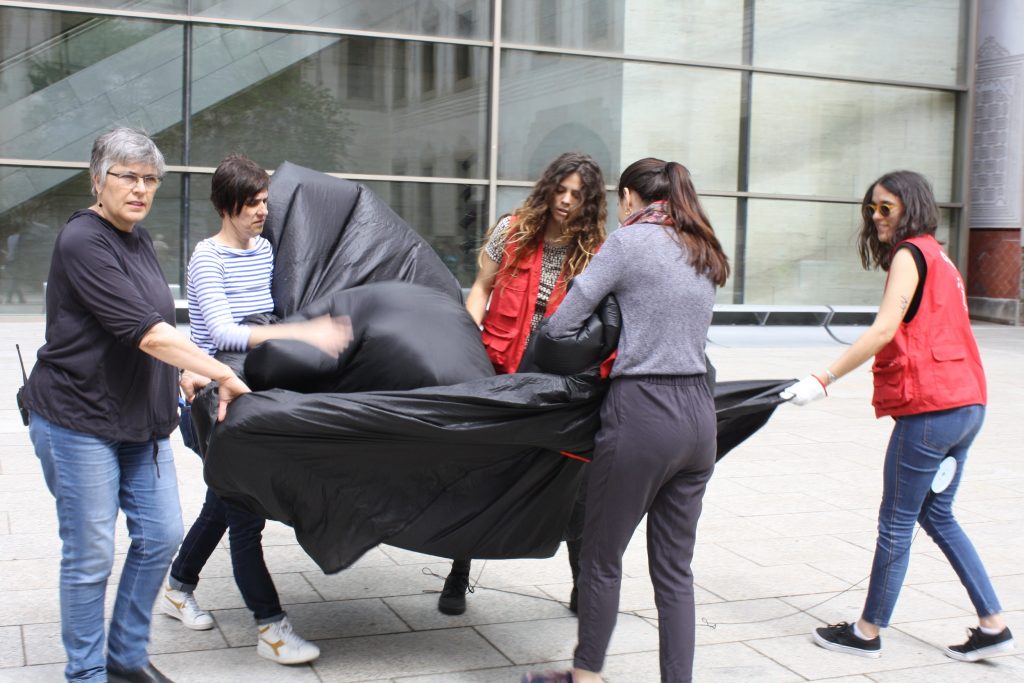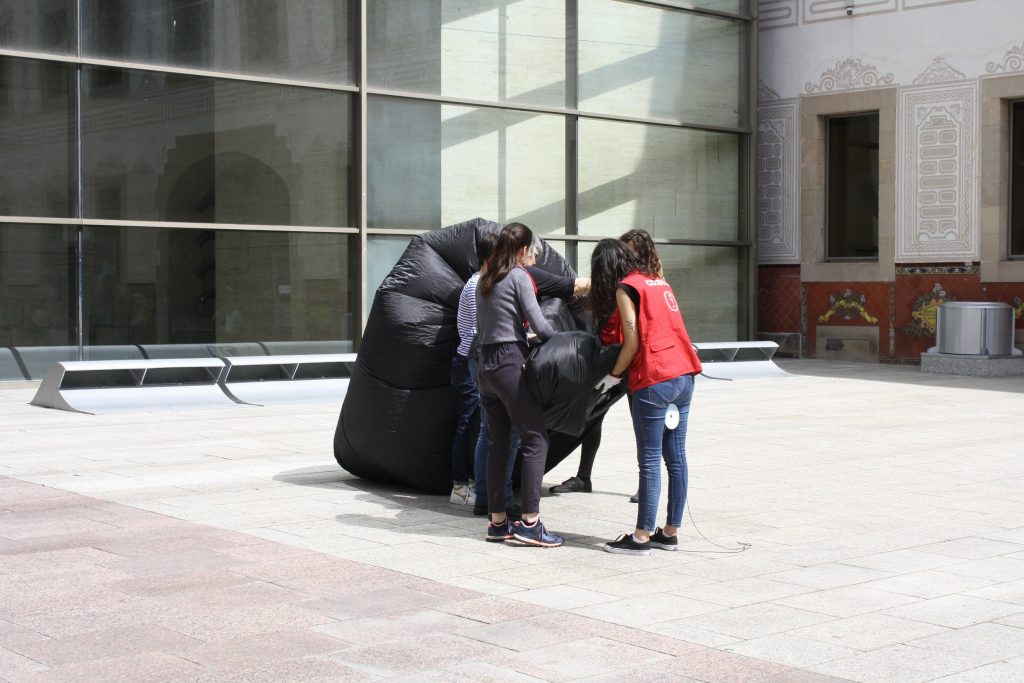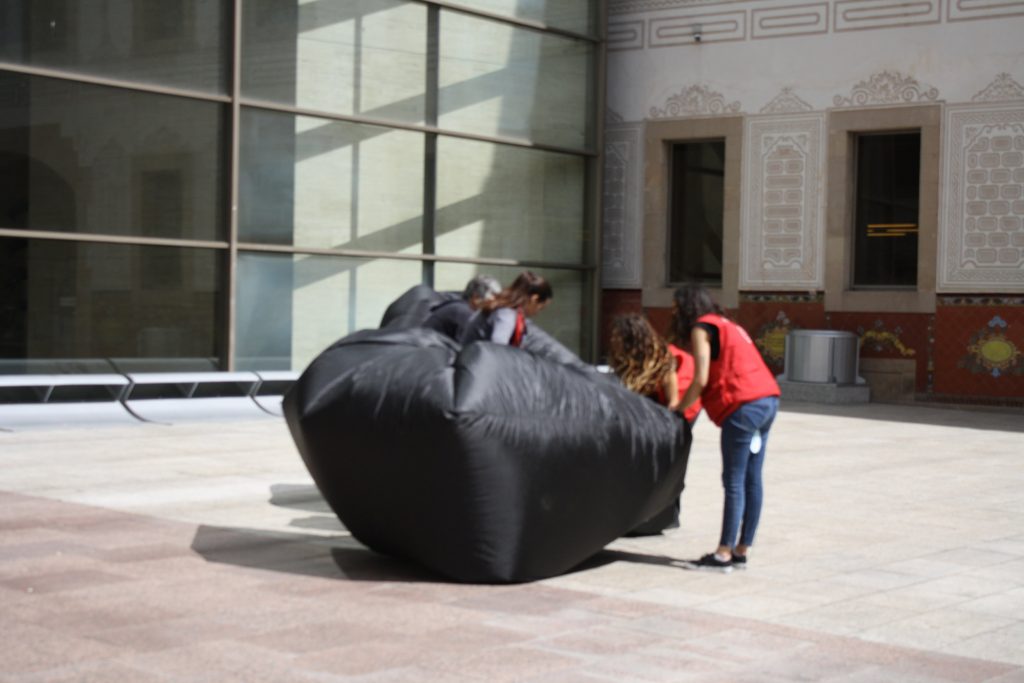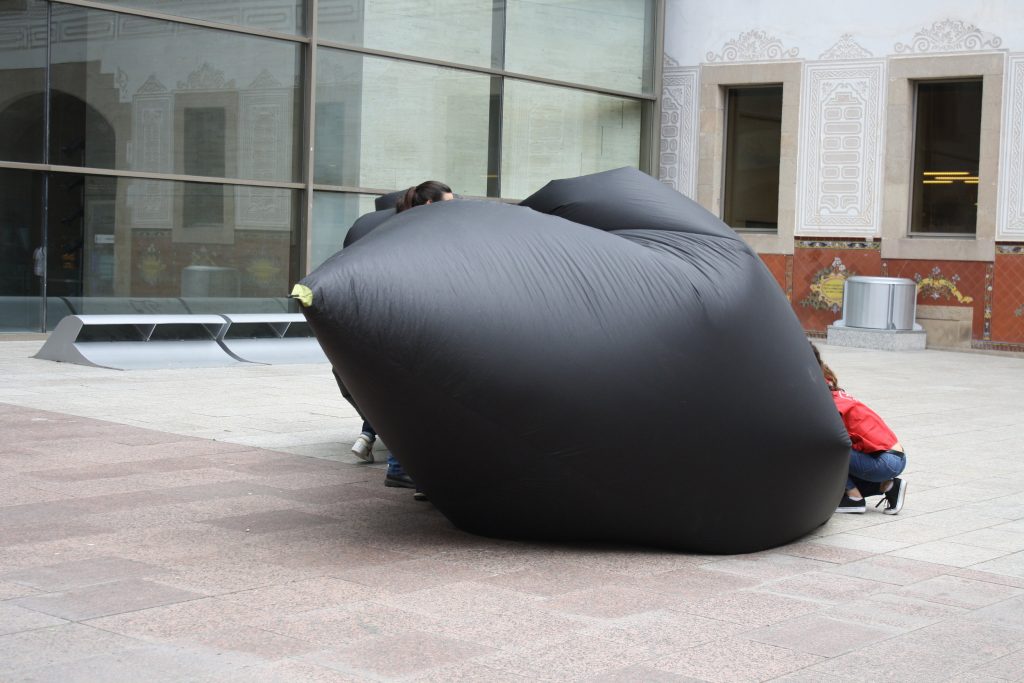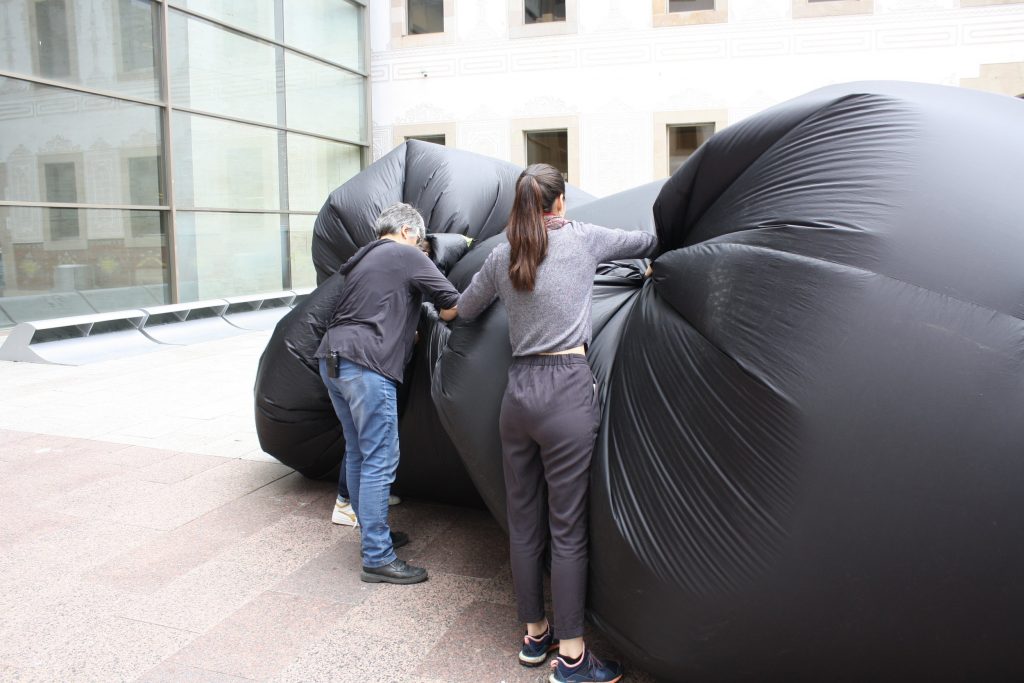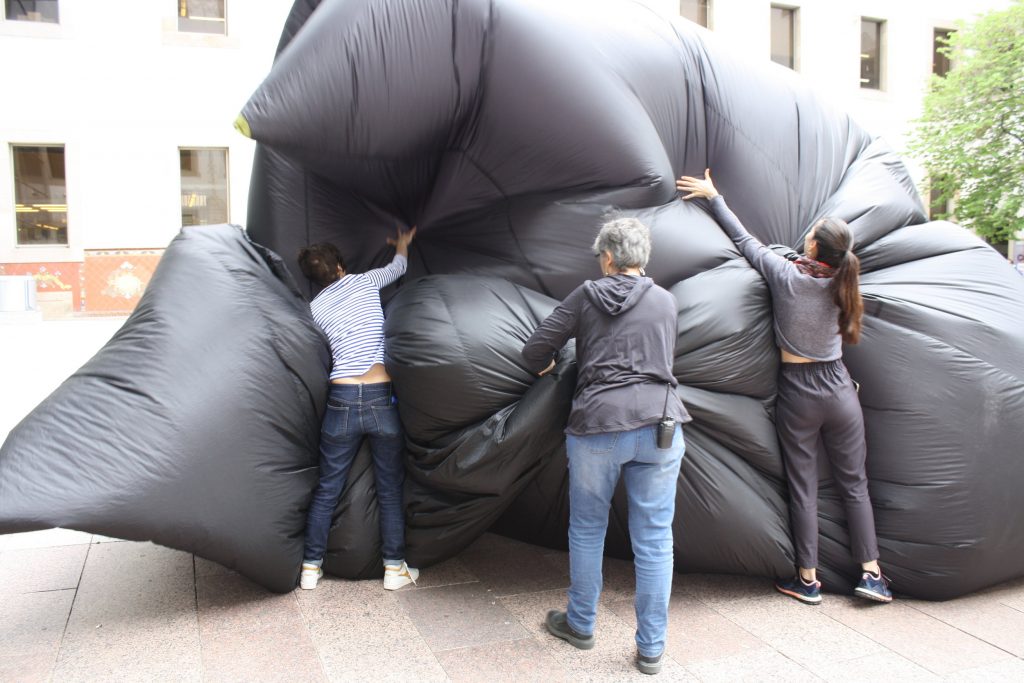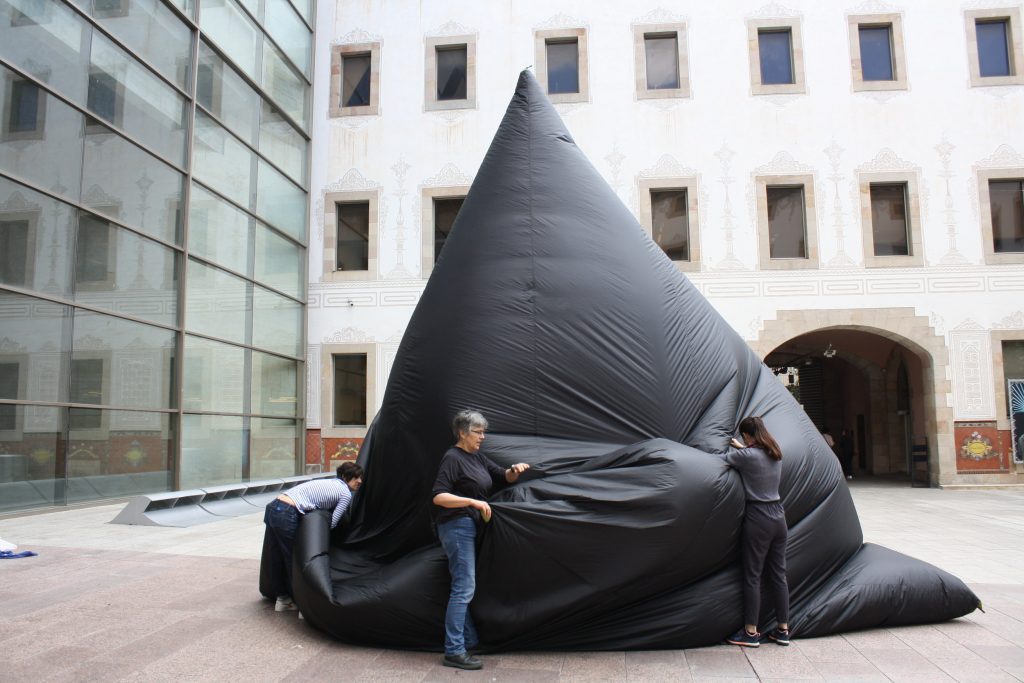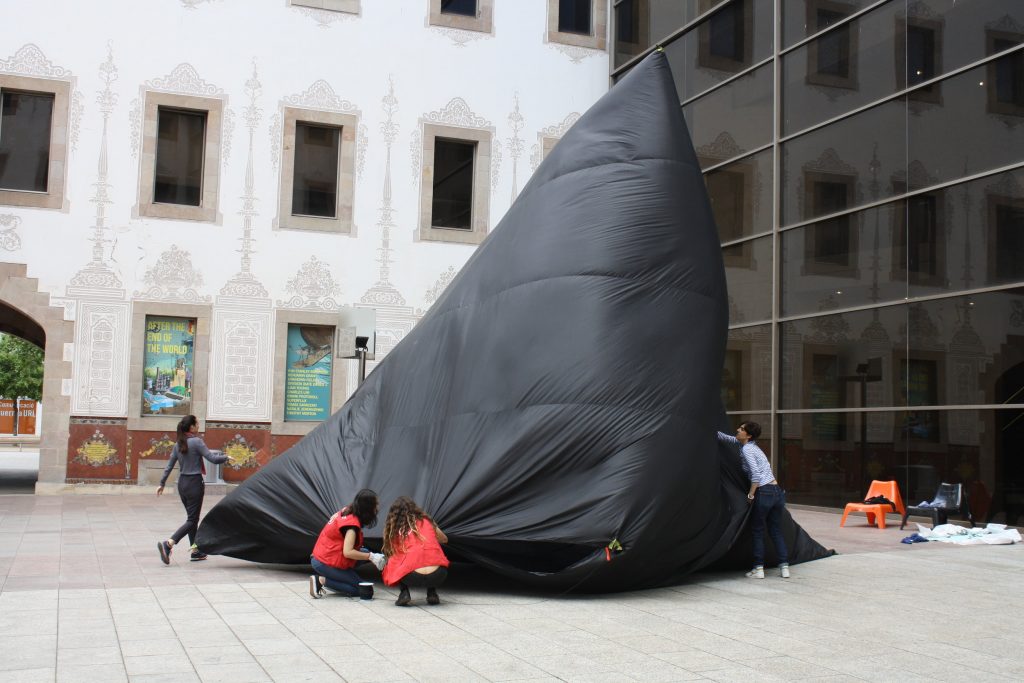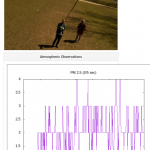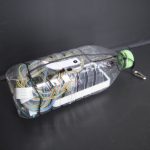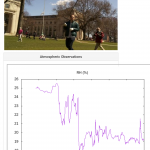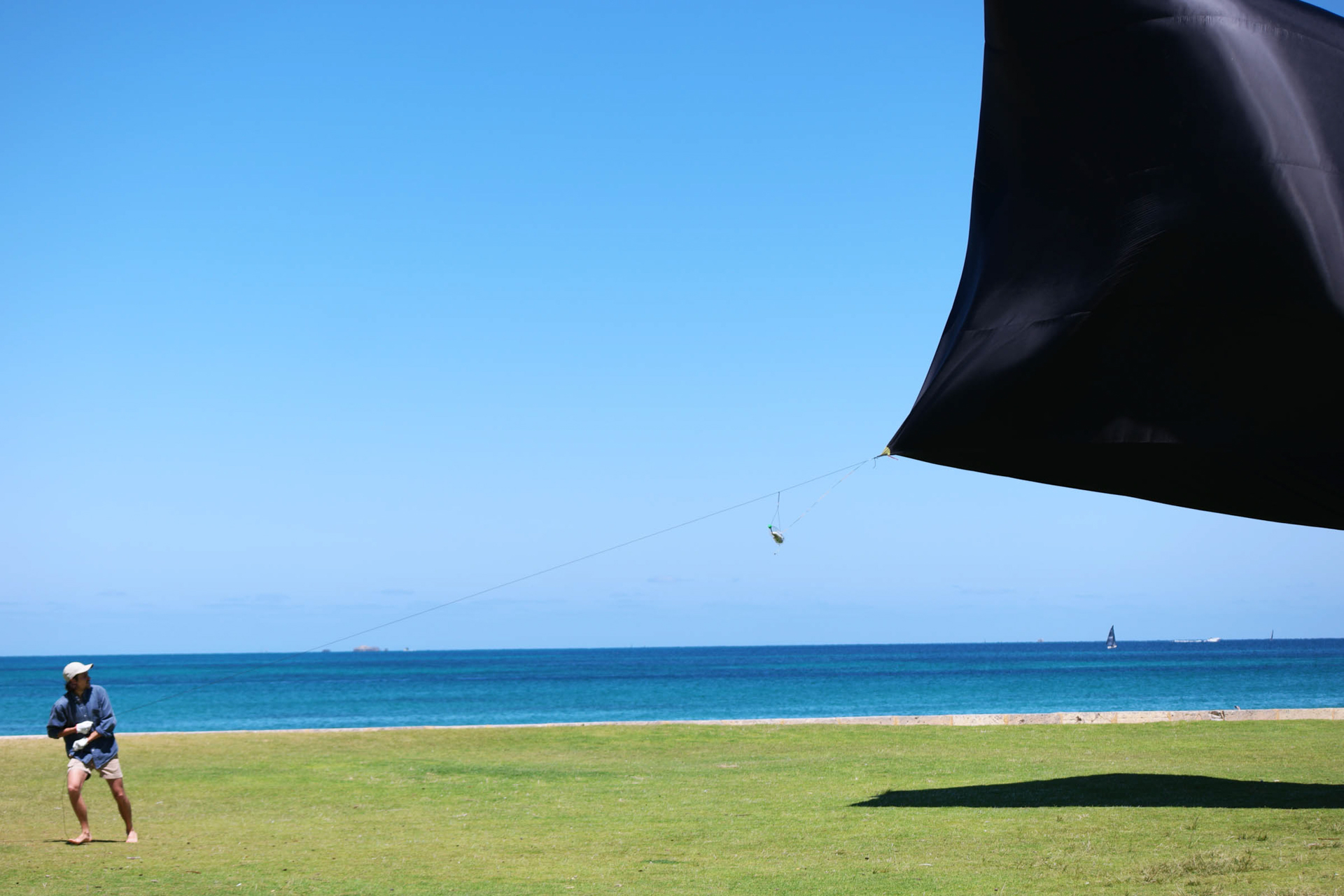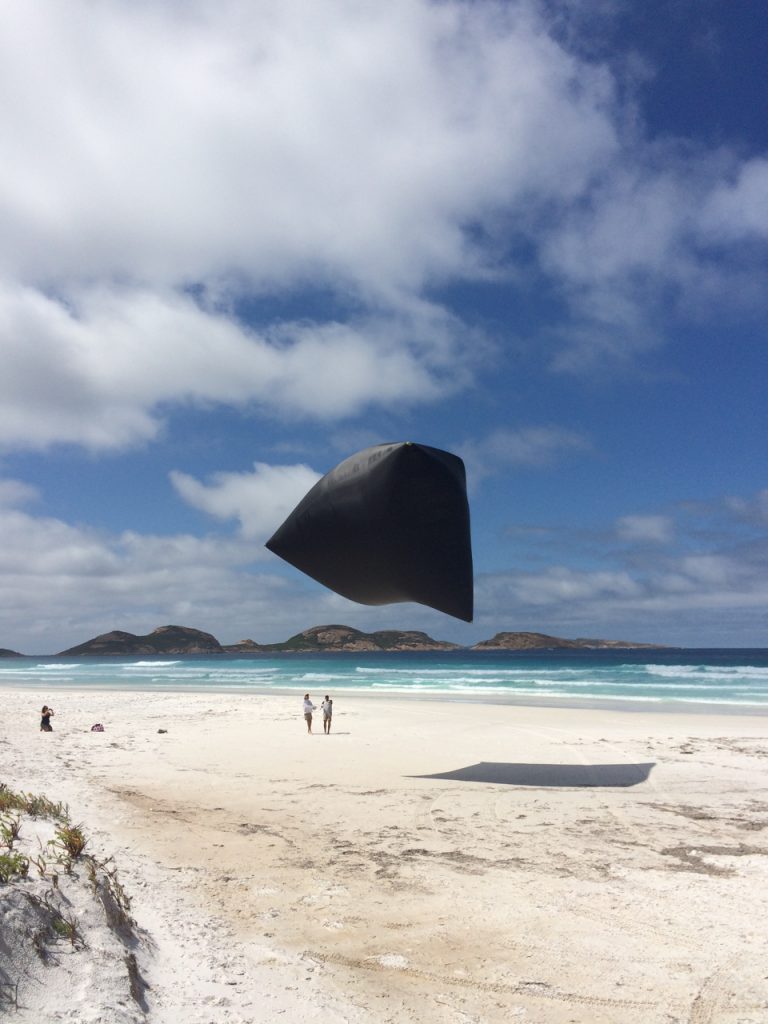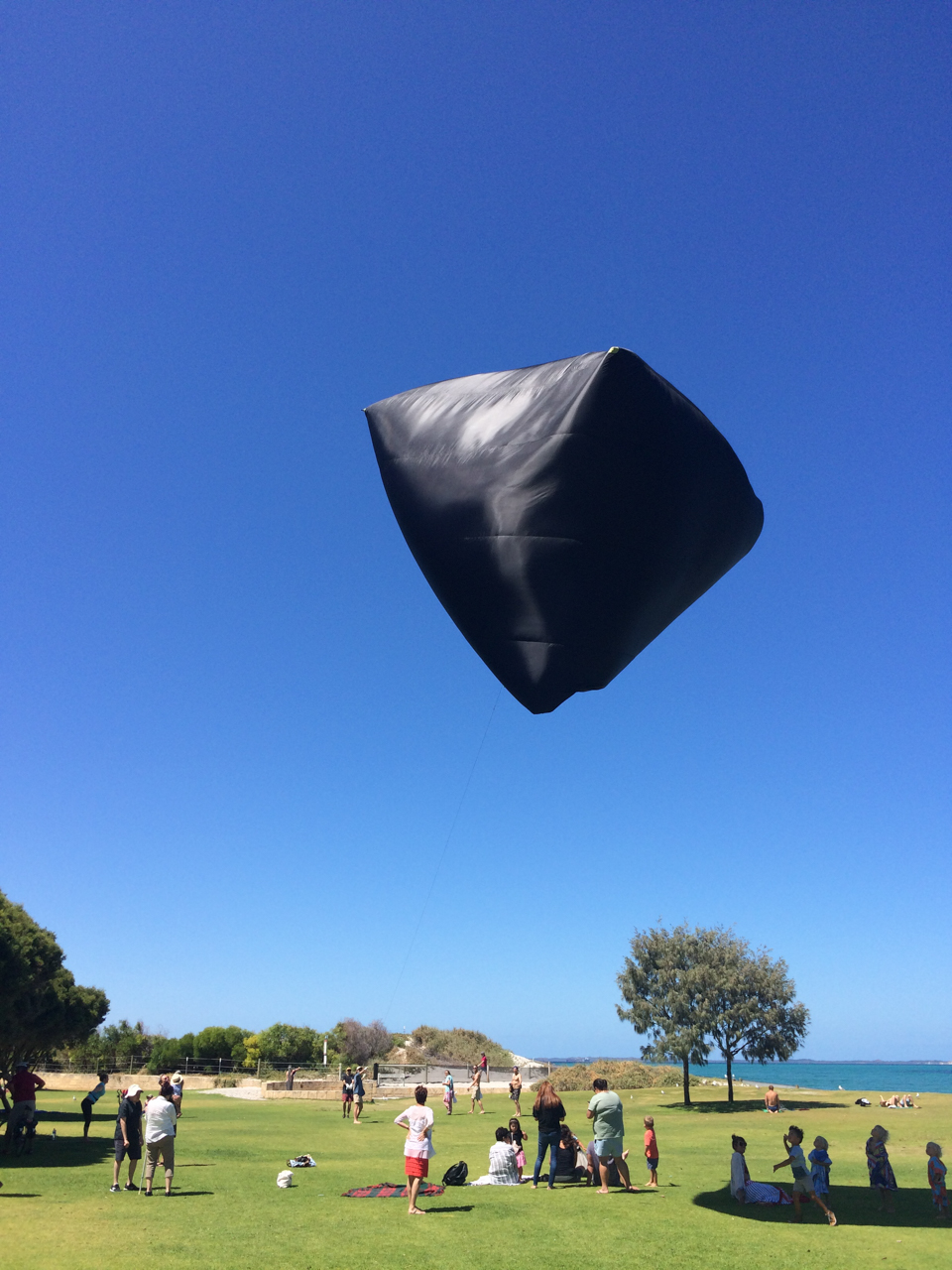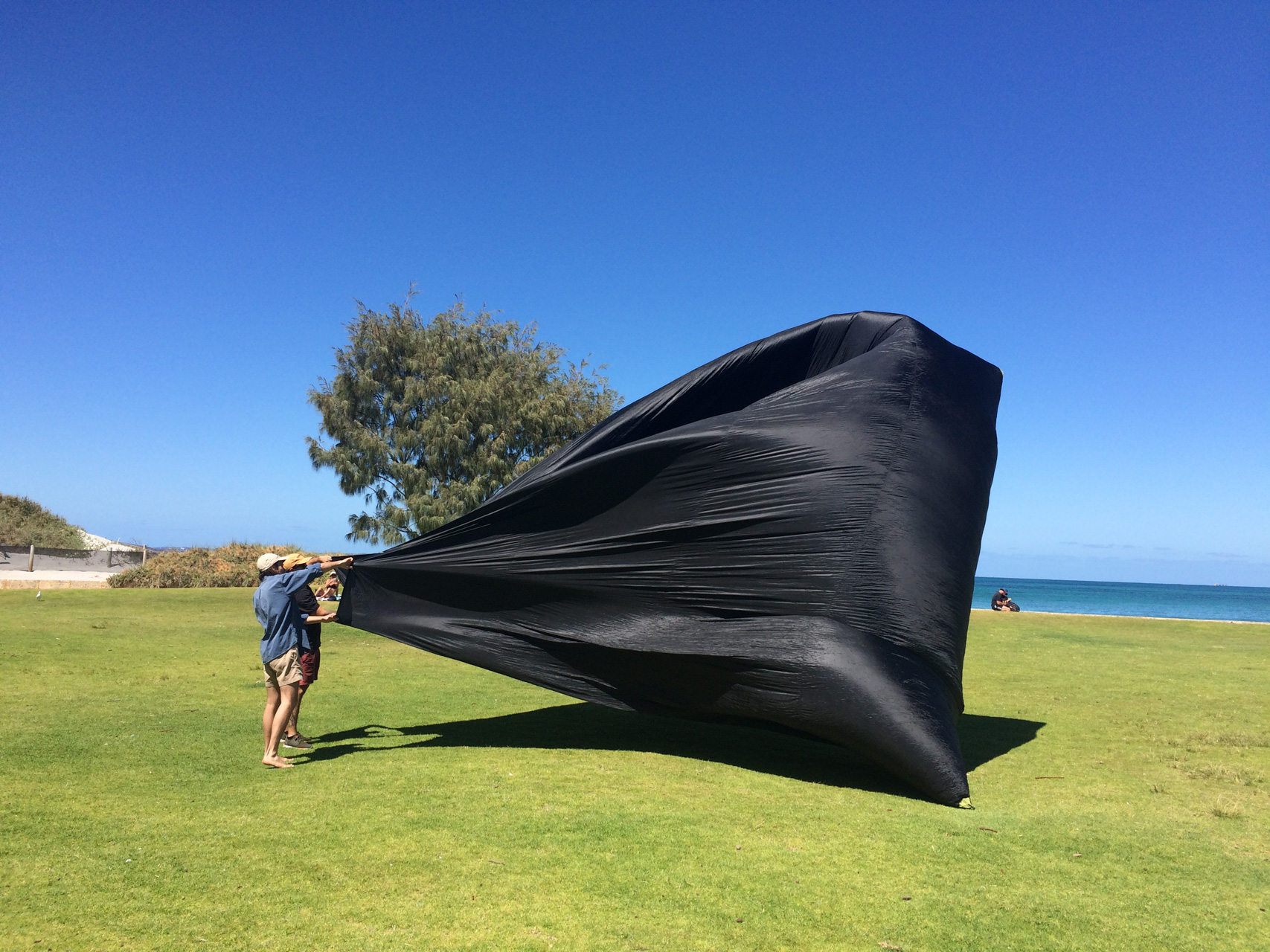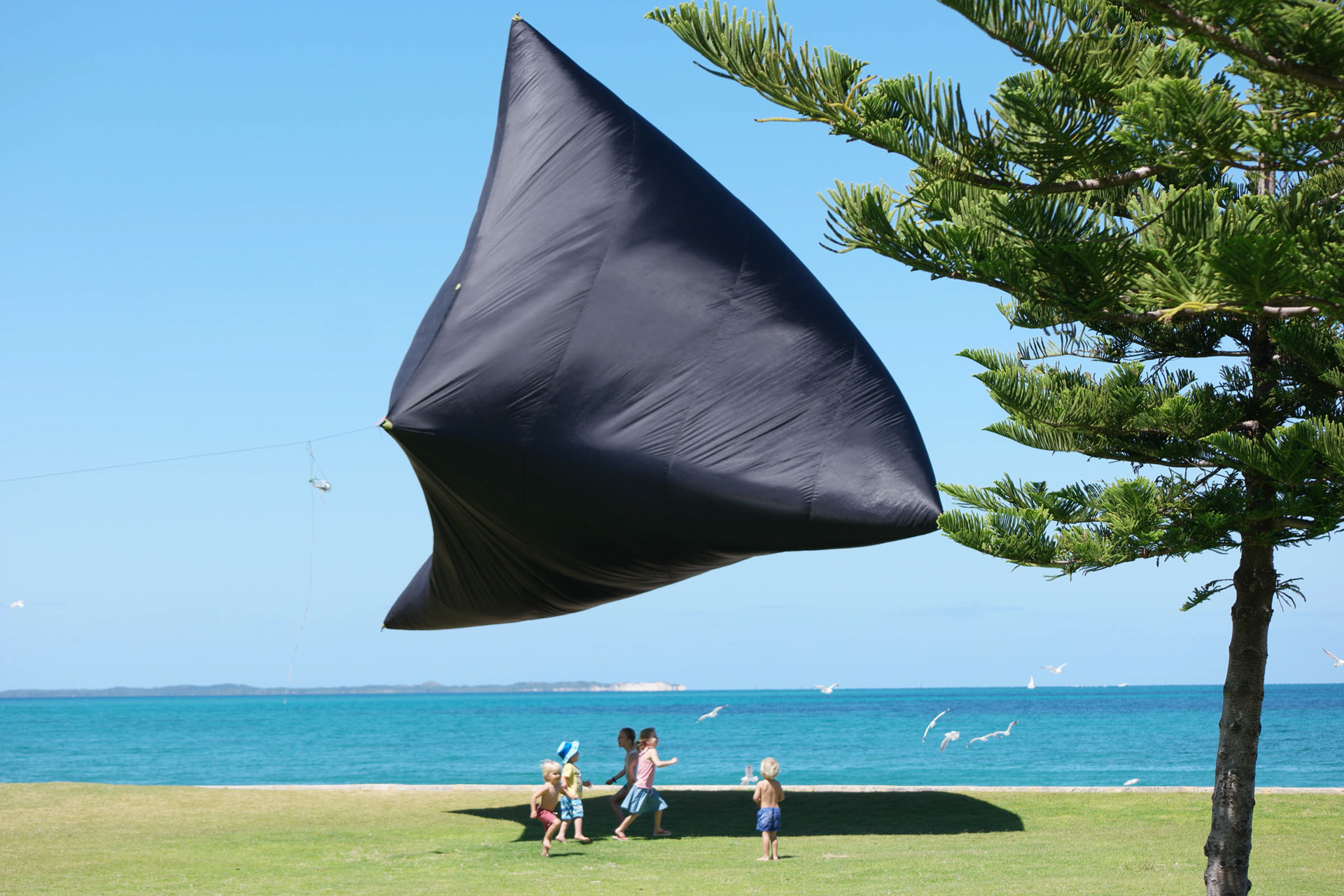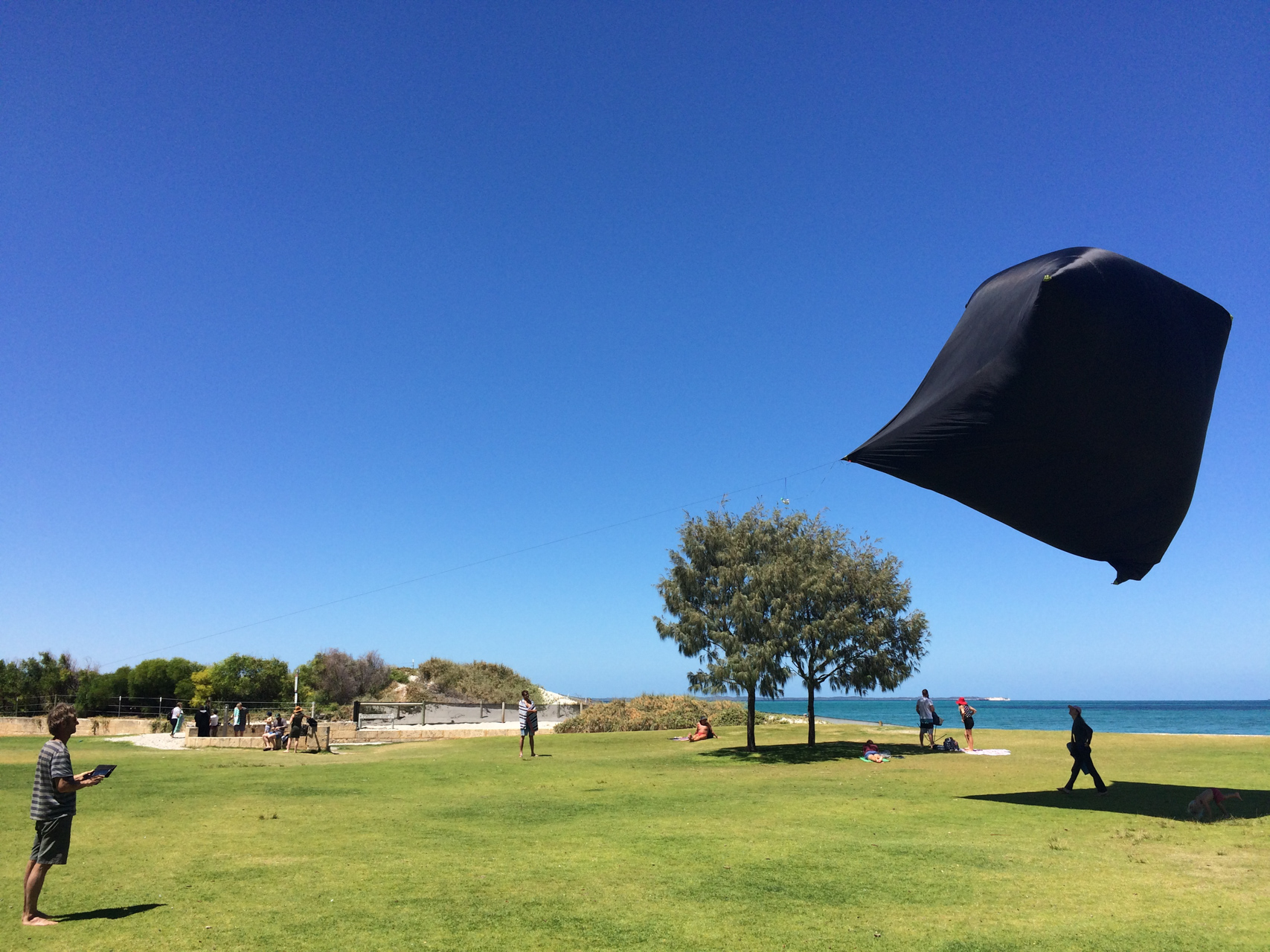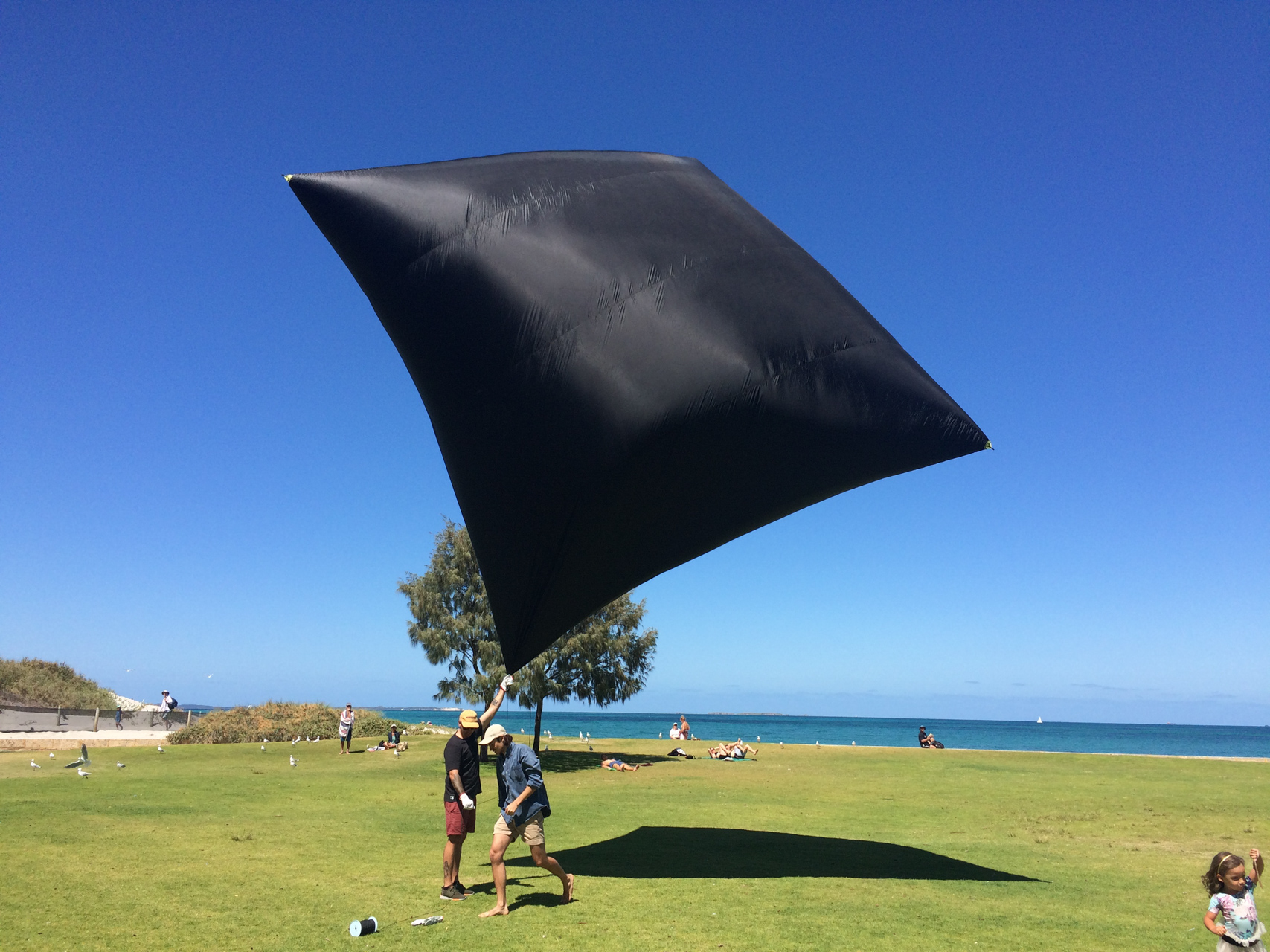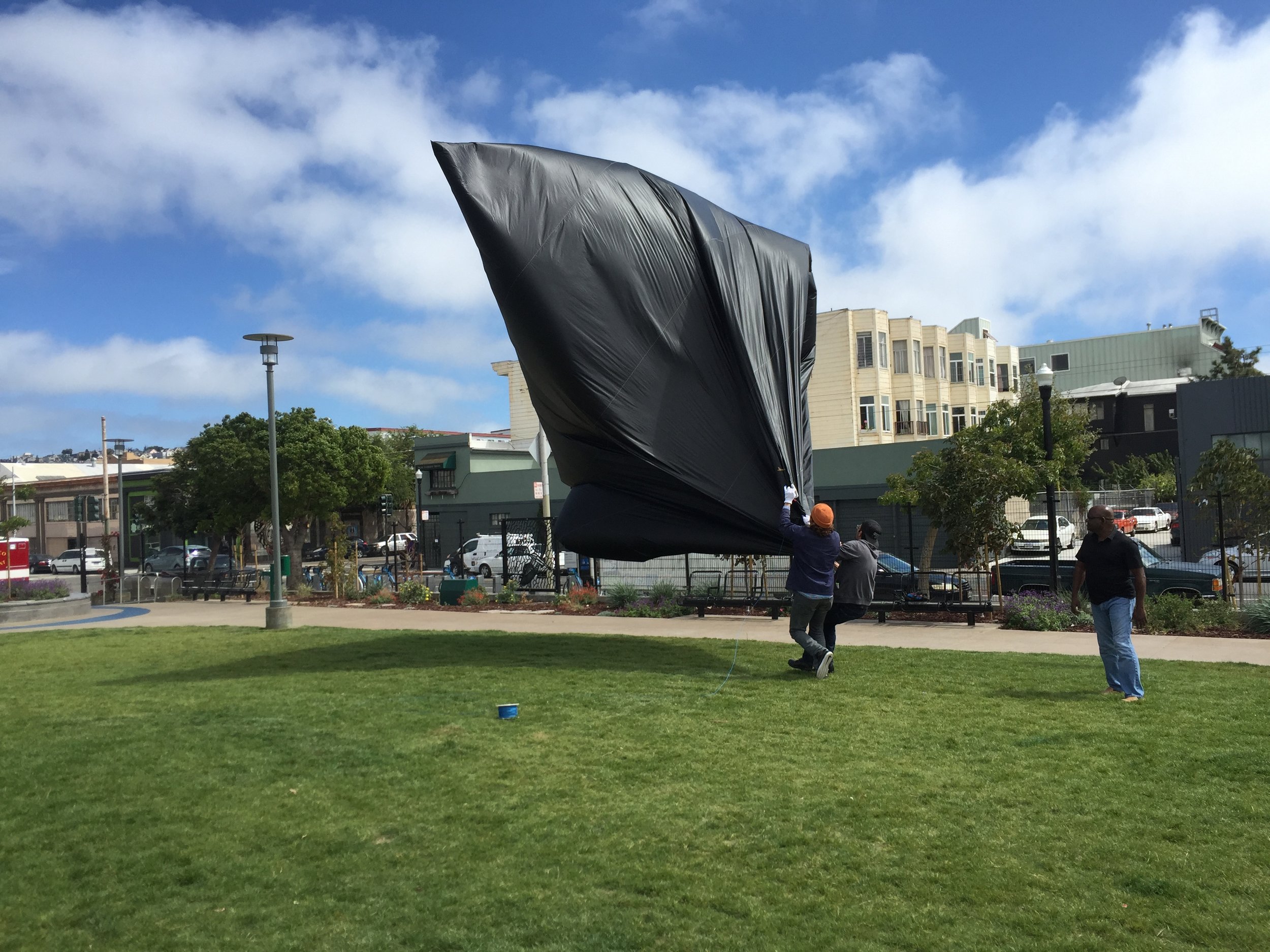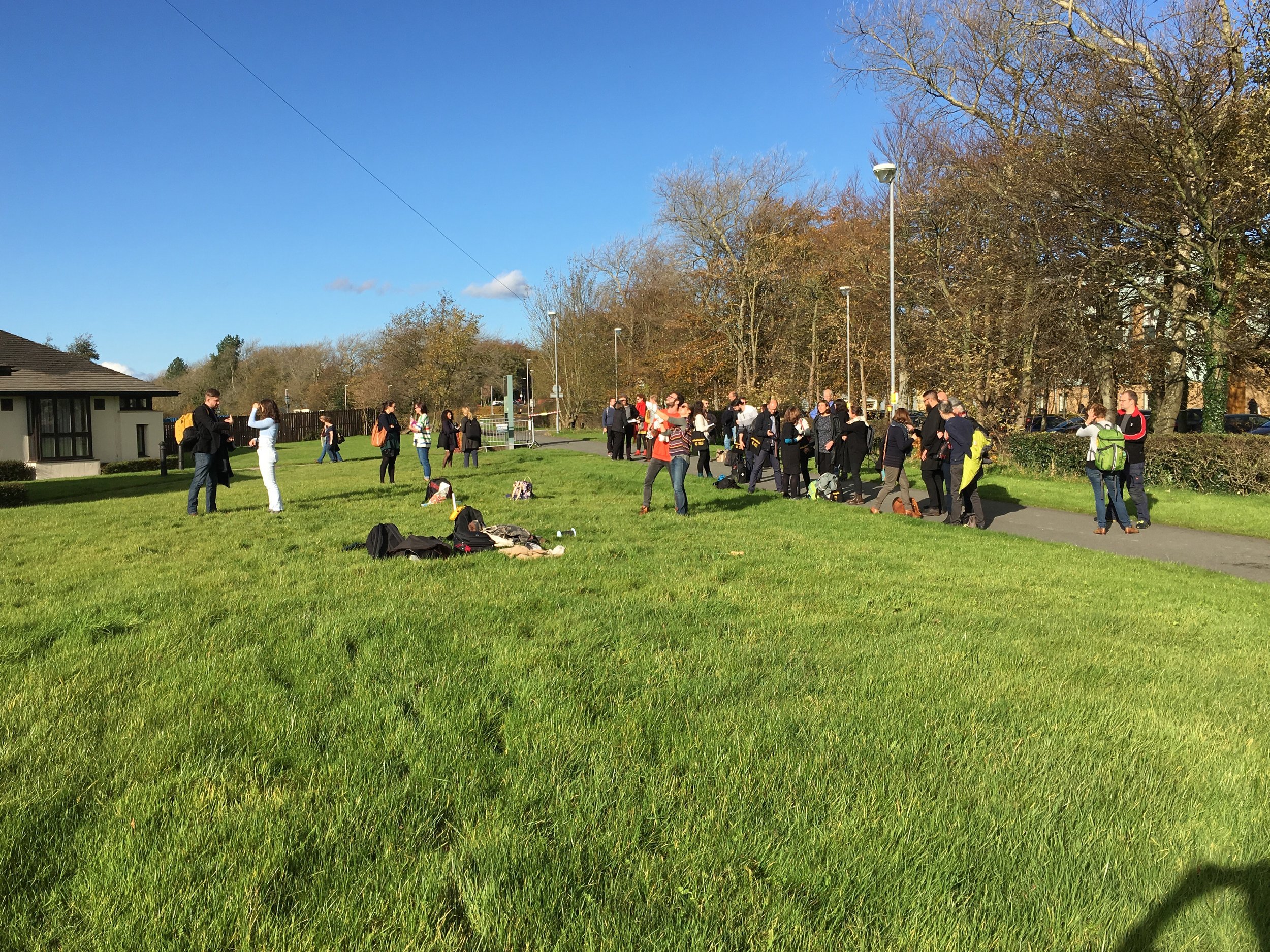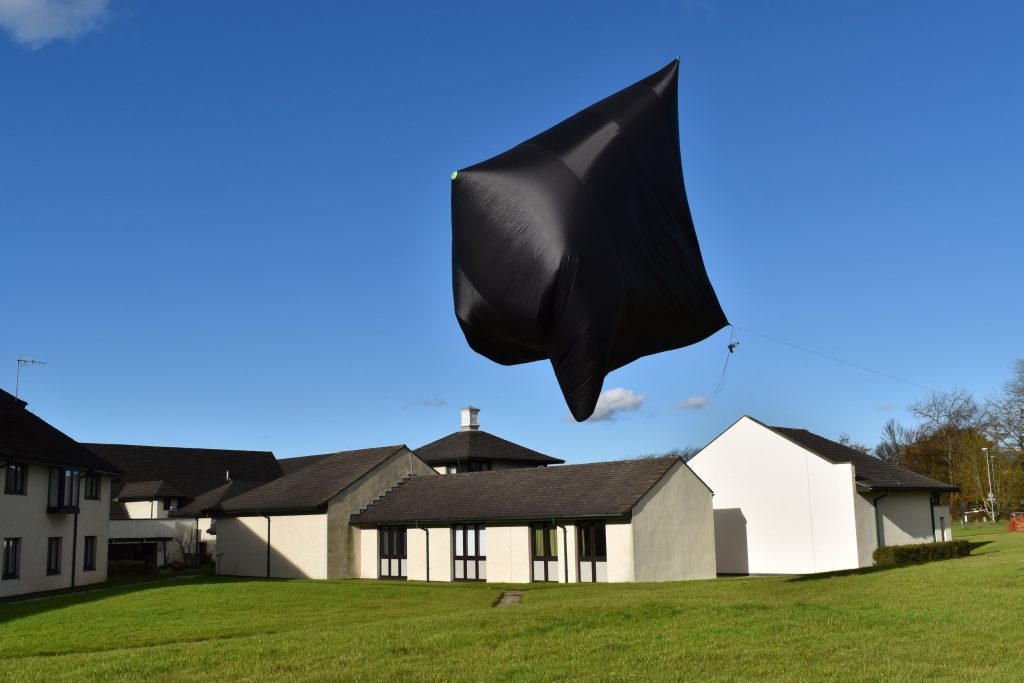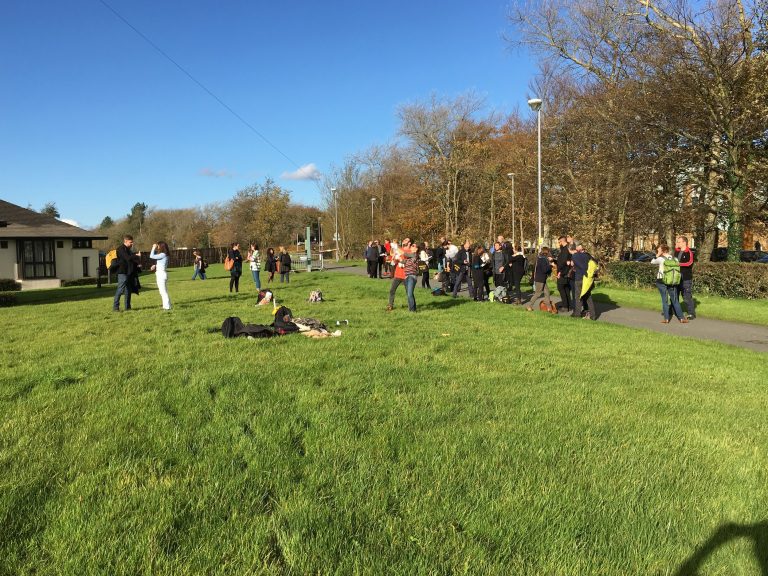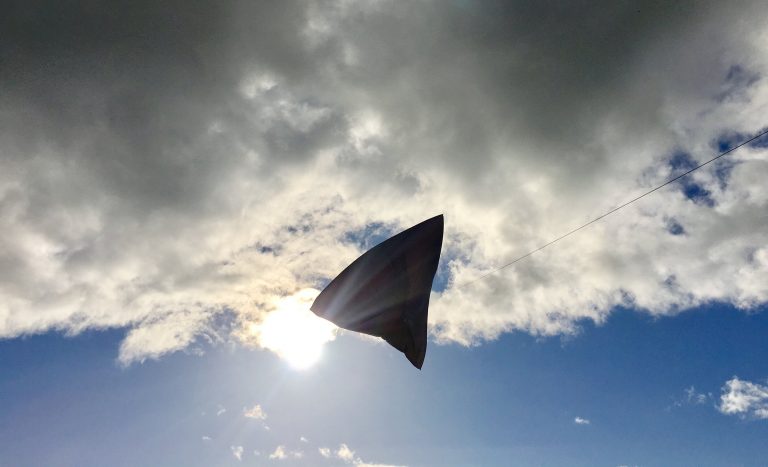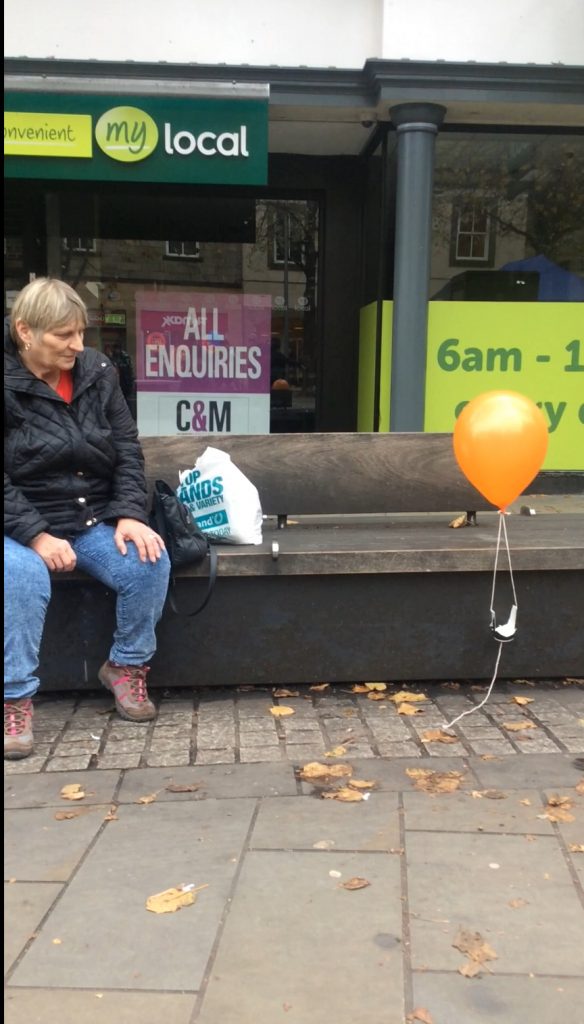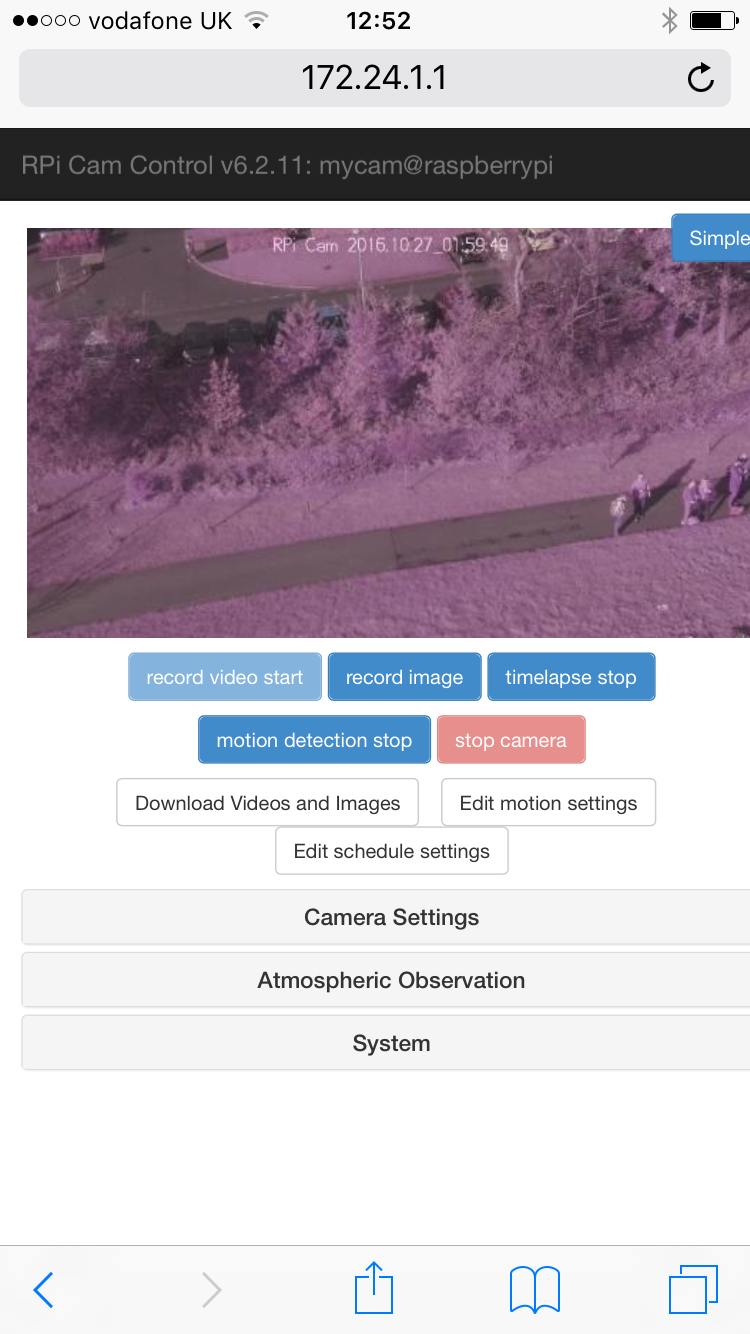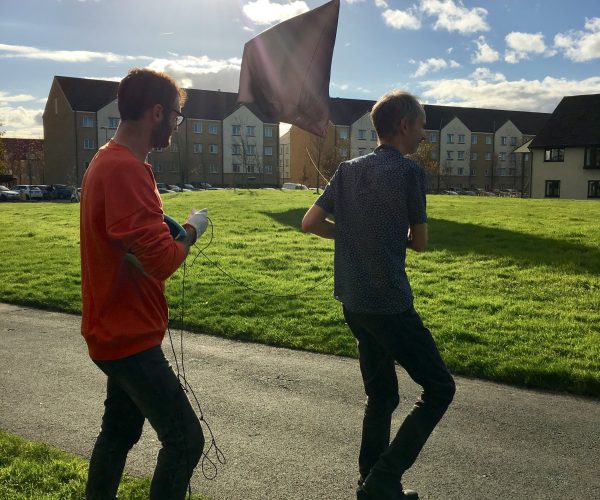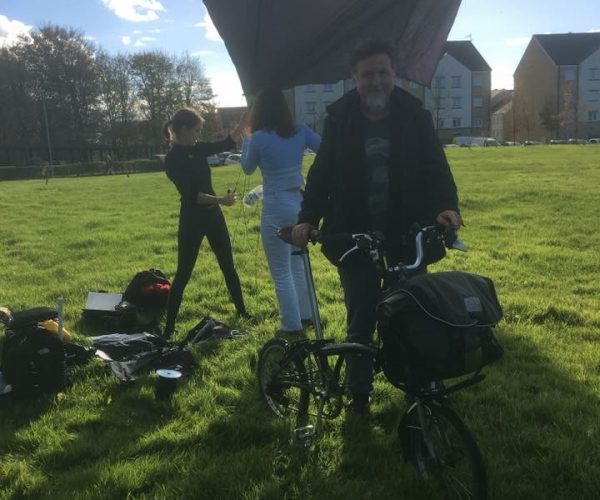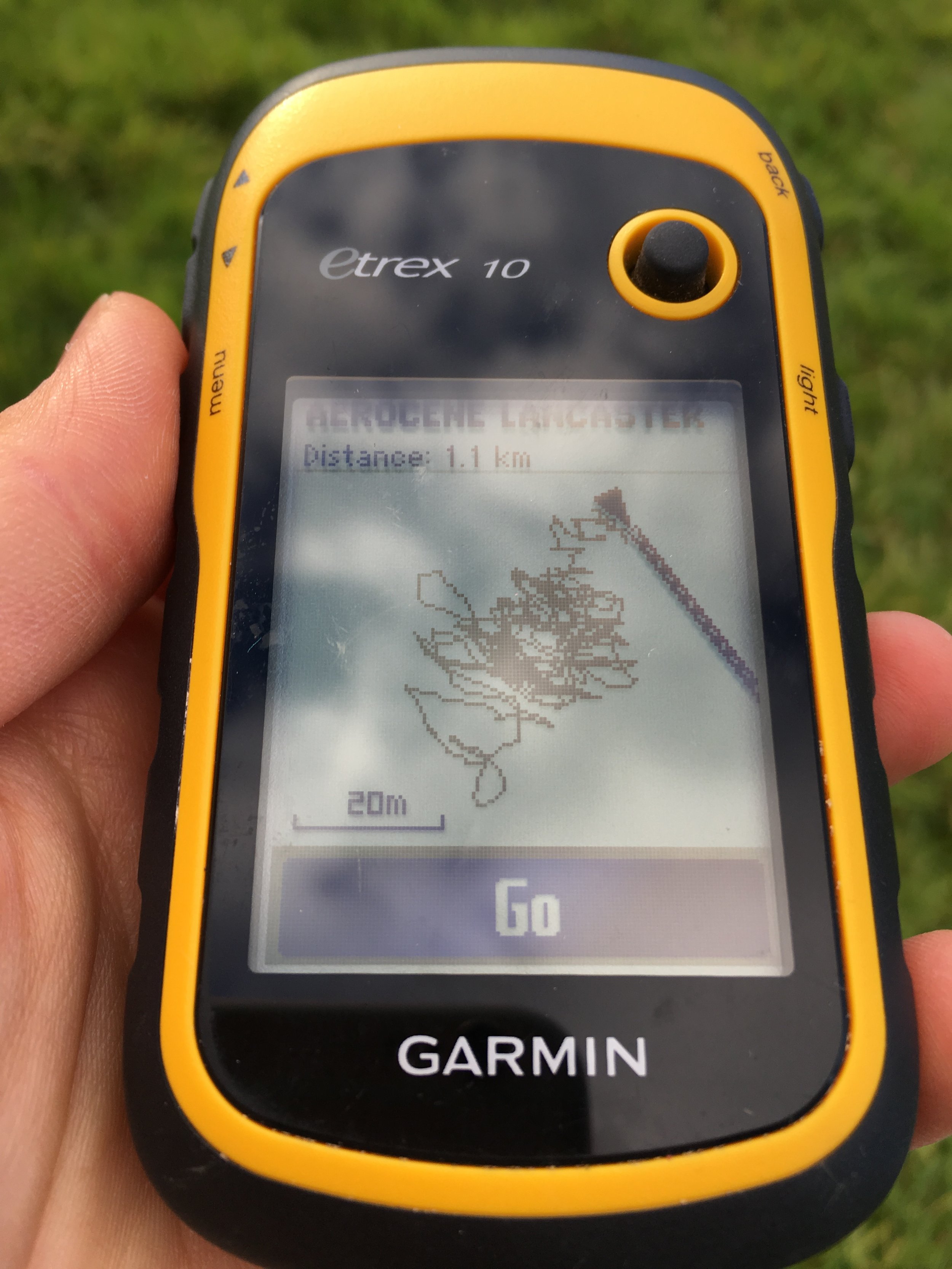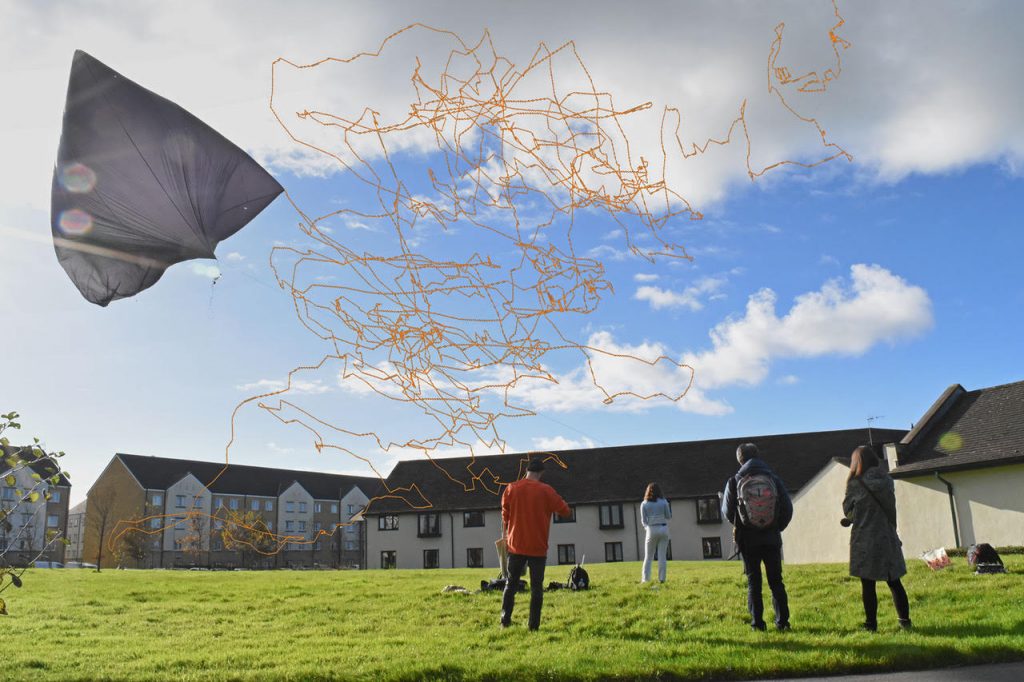Aerocene Foundation in collaboration with Sembrando Juntos Community Center, ACIJ and Blog Proyecto Riachuel
Continue readingRising in Schönfelde: a Free Flight story
New story: Free Flight at Schönfelde
by Anna Guðný Jónsdóttir Þór
Last Saturday, 9th of June 2018, two Aerocene sculptures were released in a free flight and later kindly tracked, found and retrieved by Polish radio-amateurs from Radiosondy Polska. At 9 am, over 40 Aerocene community members joined together to celebrate the launch of the book ‘Aerocene’. This was no regular book launch, since as a symbol of the continuous, soaring journey of Aerocene, a copy was attached to the sculpture Cyanophyta to be carried by easterly winds and delivering our message to the world, filled only with air, lifted only by the sun, carried only by the wind.

Throughout the pleasantly sunny morning, the Aerocene community guided Aerocene explorers through the air, which are tethered flight starter kits enclosed in a portable back-pack, created to introduce you to atmospheric expeditions in a way that allows you to sense the environment encircling you in a new fashion. Observing the sculptures ascending and descending, fluctuating as guided by the wind, induced an entirely original aura of tranquility over many of us. Sincerely, witnessing and observing the soft and yielding material of Aerocene sculptures symbolizes nothing short of a magnificent conjunction of technology, art and sustainability, an interest many of the community members share with eachother. This was expressed in a beautiful way as community members such as architectural enthusiast Matthias Böttger took initiative to interact with the explorers. Everyone guided and observed the explorers as they decorated our surroundings with aerial signatures, marking our collective agreement to open the Air of Commons Convention – the Aerosolar Transnational Agreement declaring our matter of concern: de-carbonization of the air! As a newly joined Aerocene community member, this was an experience I would surely never forget!

In the midst of these explorers, Cyanophyta was released, carrying a copy of the newly released ‘Aerocene’ and accompanied by another ascending sculpture, which rose together and were swept away, purely rising by the energy of the sun and travelling by the power of the wind. Cyanophyta´s nomenclature originates from organisms that initially changed the composition of Earth´s life forms by producing and releasing oxygen, and now it was time for our soaring sculpture to challenge their legacy by strengthening our agreement of decarbonizing the air. Crossing borders into the new epoch Aerocene, Cyanophyta carried our collective signature of our commitment to a sustainable future for all. The sculptures were released around 10 am and floated in ensemble as we observed the way they intertwined with surprise and delight. Just as the two sculptures soared together, bound in a similar path through the force of the wind, we remained together, bound by the message being delivered by Cyanophyta: free from borders, free from fossil fuels.
After the release of the sculptures, there was an interesting communal attentiveness to the location of the sculptures in the sky before they surpassed our field of view. During this time, people began to find increasingly creative ways to describe the position of the sculptures in the air to one another. Creativity and collaboration is an important aspect of Aerocene which is also shared with members of the community such as Thomas Heidtmann, a media artist from SPARTH. As interesting and inspiring individuals, all members of the community mingled, enthusiastic about the developments being made for the journey of Aerocene, as we kept an eye on the sculptures slowly disappearing behind effervescent clouds.

While we settled and assisted each other to find them in the sky, the tracking systems attached to the sculptures were recording both their position and temperature, such that with a link and a call sign they could be tracked on your phone and other devices. So, even when the sculptures disappeared beyond, you could still observe them. Another crucial part of the tracking system was the recording of particulate matter enveloping the sculptures. Particulate matter is fine dust in the micrometer range, a form of air pollution being tracked on the ground in many areas of the earth. With this free flight, Aerocene has lifted these measurements into the air to observe the distribution of pollution above us, which can allow us to examine the air conditions in a significant way.

Along with the amazing engagement of the people present at the launch, we were gifted the efforts of new friends of Aerocene across the border in Poland. Some amazing people who took the task upon themselves to track, find and retrieve the sculptures upon landing. As community members celebrated, chatted and enjoyed each other’s company in the fields outside of Berlin, watching the sculptures take flight and disappear beyond the horizon, efforts were already being made to find the sculptures over in Poland. Only hours after the launch, messages began to arrive about the search from people that were excited to join the effort. The first sculpture was found on the same day, while the one carrying the book was searched for over the weekend and found on Monday the following week. The amount of time and energy invested into the recovery by the community members across the border and their enthusiasm to do so is an extraordinary sign of the growing network of the community. So whether squinting to try to find the sculptures above, looking on a screen to track the sculptures via satellite, chasing the sculptures, or all of the above, our amazing Aerocene community made the launch as spectacular and uplifting as one could have hoped. And as a growing community of people, by exploring buoyancy using the natural resources that continuously dance around us, – the sun, the air, and the wind – we collectively join their dance in a venture to grow more attune to the natural rhythm of the planet.







Fair winds!
Thanks to:
Alice Lamperti, Anna Drewes, Aurelien Calpas, Aysegul Seyhan, Banu Çiçek Tülü, Camilla Berggren Lundell, Claudia Melendez, Dario Iannone, Dario J Lagana, Denis Maksimov, Devrim Yasar, Erik Vogler, Esther Schipper, Gwilym Faulkner, Hannah Turner, Ilka Tödt, Joshua Depaiva, Kimberly Bradley, Leopold Schulenburg, Mariia Dubrovska, Martina Pelacchi, Matthias Böttger, Moonsung Cho, Roland Mühlethaler, Roxanne Mackie, Sara Ferrer, Sophie Rzepecky, Sven Steudte, Thomas Heidtmann, Timo Tuominen,Yelta Köm, Zaida Violan
Including all participants!
Aerocene movements over CCCB – Barcelona
Bacelona, the Aerocene Explorer flies over the CCCB
Barcelona, Spain: 30 April 2018
Only one day before the closing of ‘After the End of the World’, an exhibition about the Earth of 2017 (irreversibly transformed into the Anthropocene planet after two centuries of human impact on natural systems) and how we will reach the world of the latter half of the 21st century; the CCCB team decided to perform the Aerocene Explorer tethered-flight by using the material contained in the Explorer Backpack hanging from our exhibition walls. The launch was performed in the Pati de les Dones, an exterior courtyard enclosed by the buildings of the CCCB. The courtyard is a public space, which means that any pedestrian passing by could see and enjoy the experience.
It wasn’t the first time we had planned to fly the Sculpture over our cultural center, but the weather conditions in Barcelona during the past weeks had been unbelievable! Since when has the sunny city seen so many cloudy and windy days in spring? May we blame climate change once again? Or shall we be blamed for the change in climate?
Fortunately, the conditions that morning were good enough (a sunny morning with low winds) to allow us to perform the experience and finally materialise the activity, offering greater understanding to the audience, who was able to visualize the concept functioning in open air. But how did the process go?
STEP 1: We prepare the Sculpture in the yard for the flight
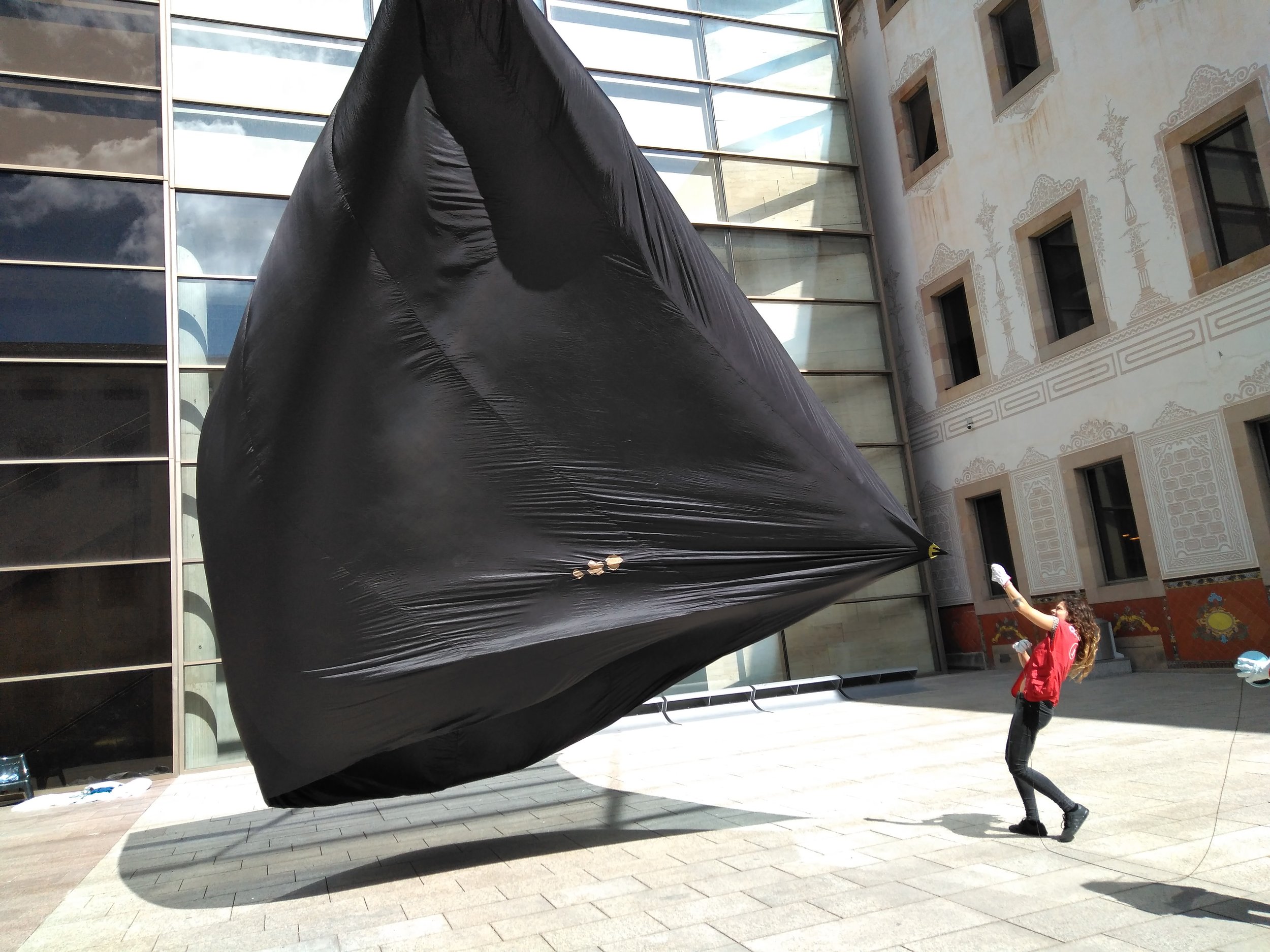
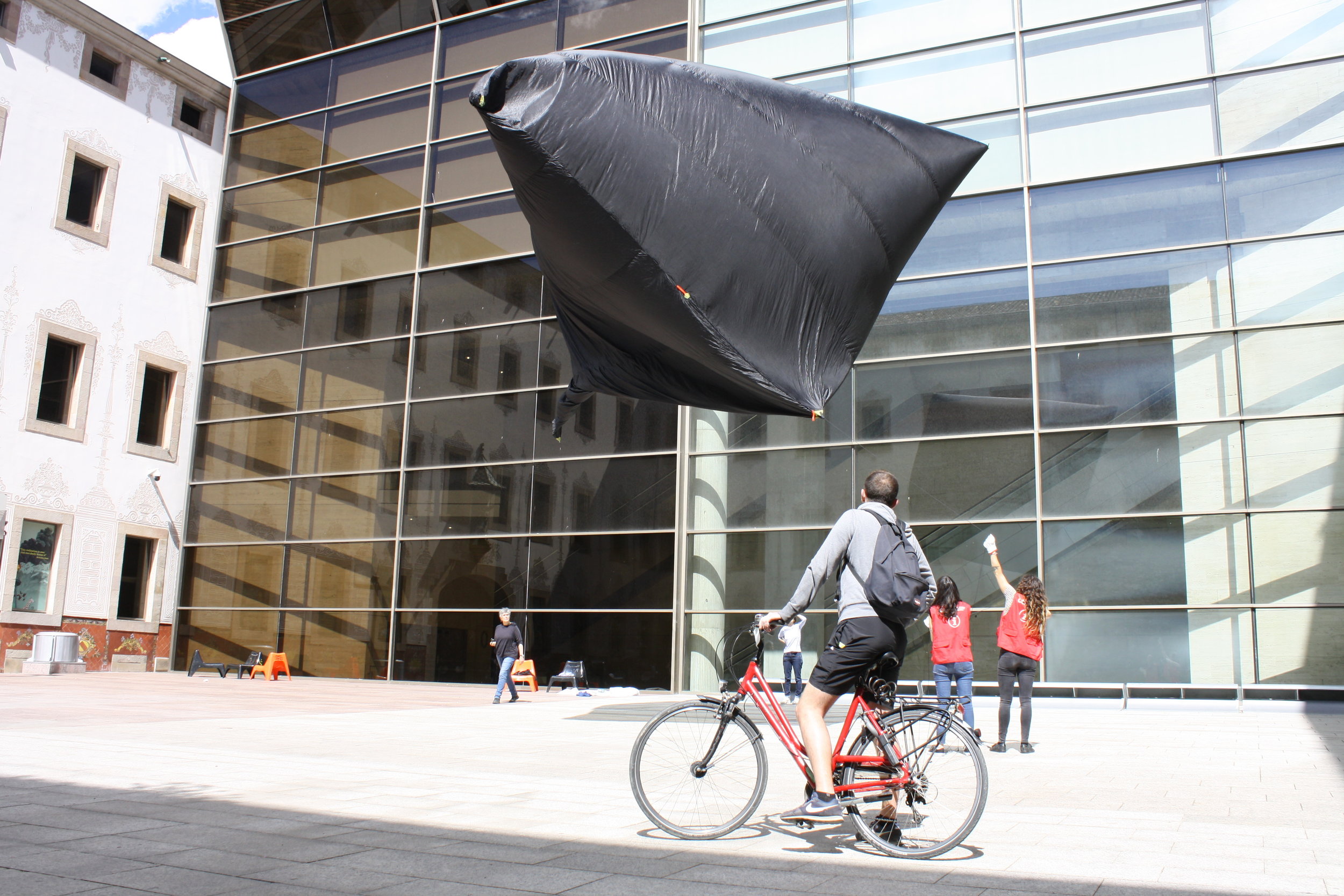
STEP 2: We manage to make it fly!
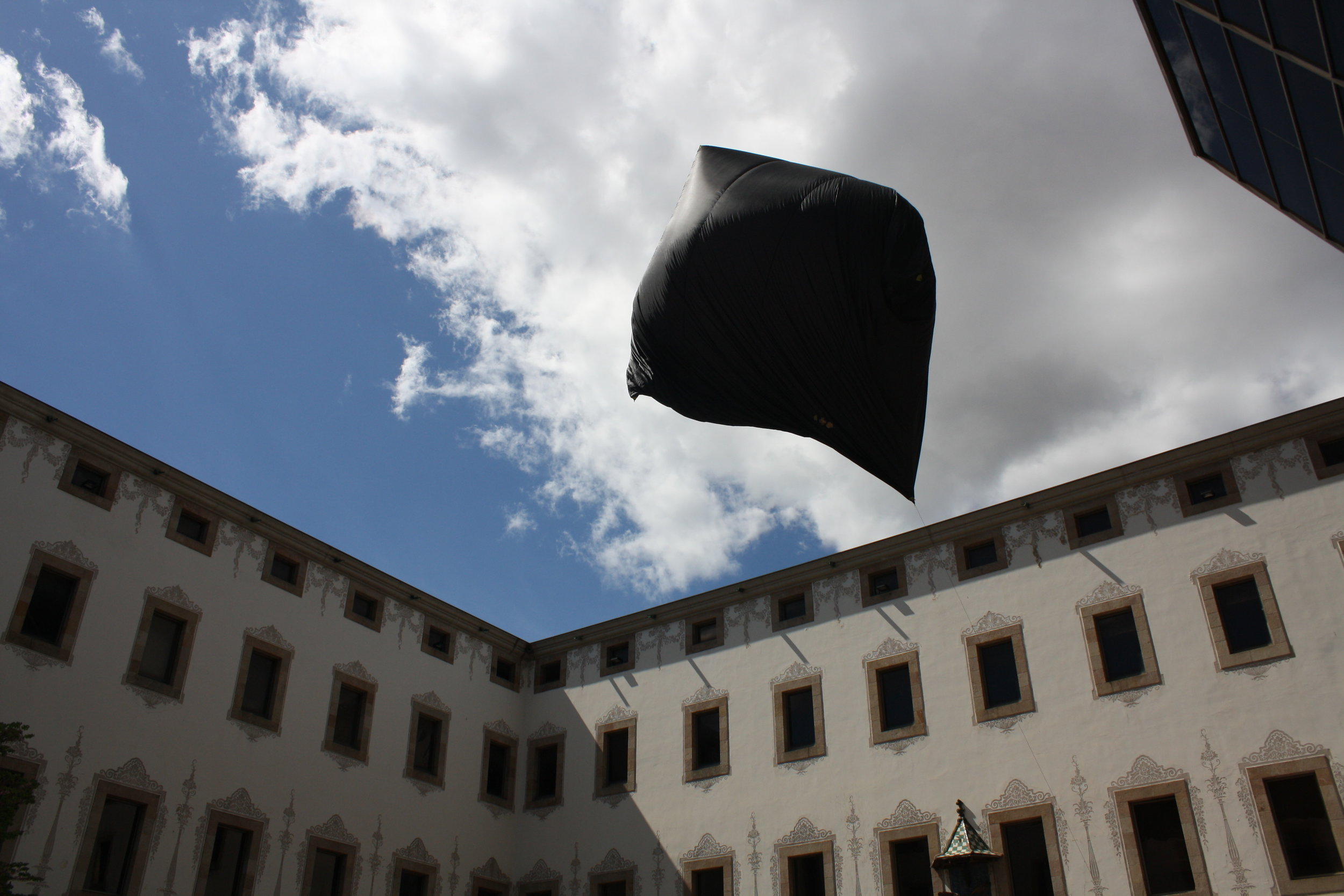
We were impressed by how quickly the Structure raised to reach the sky. All of a sudden, people passing by started to gather around to see the Sculpture fly. Many were extremely curios and took their phones and cameras out to capture the moment; children were impressed, looking at the sky and running around the yard to follow the Sculpture as it flew.
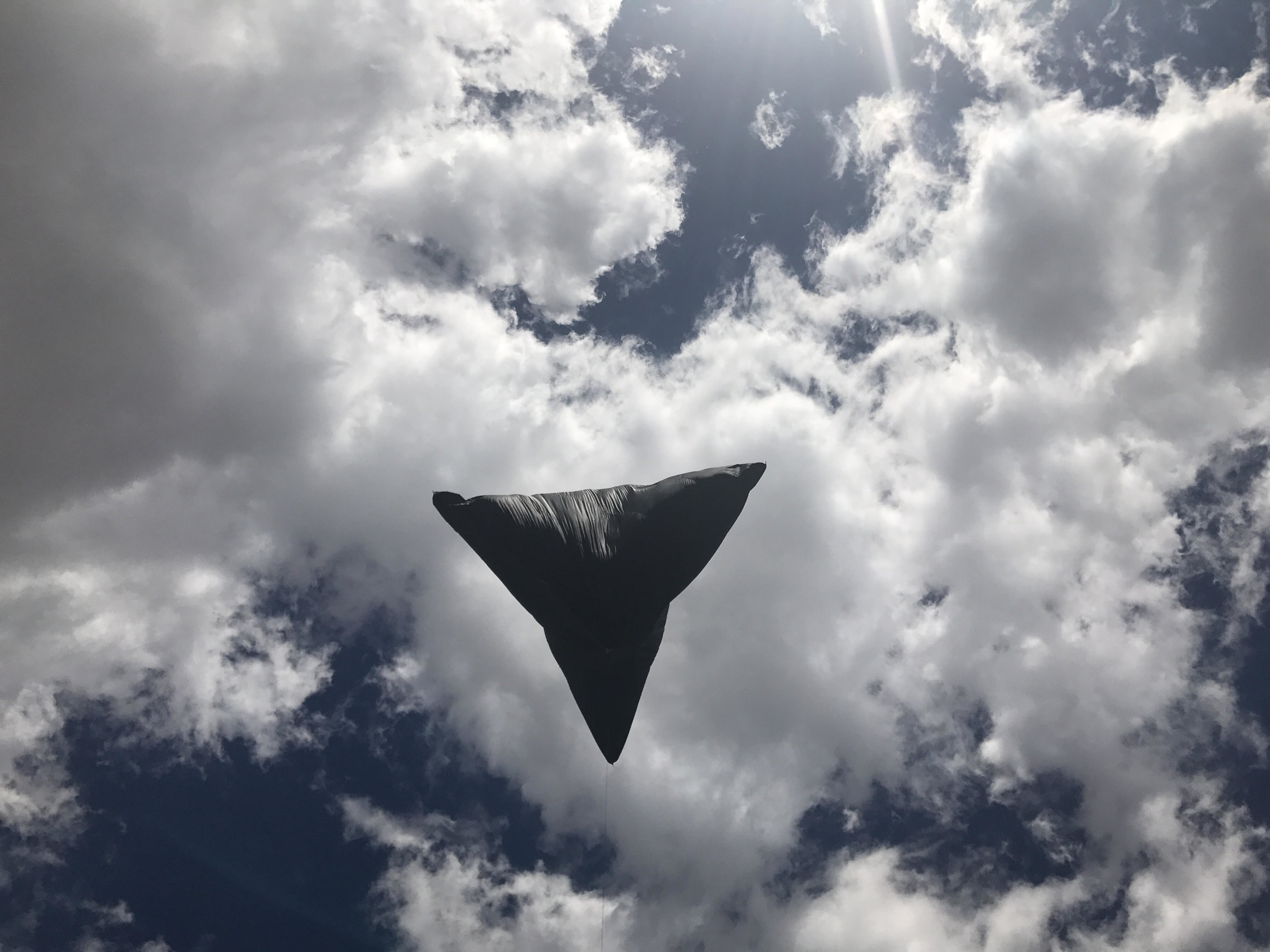
When the morning started to look gloomy again, it was time to take the Sculpture back
to the ground and place it back to its container. It took 5 of us to fold it but, with
patience and team work, we finally managed to get the air out (always keep an eye on the hole – it needs to be open for the air to escape!) and finalise the experience!
Being able to publically practice and present the utopian architectural project of the Aerocene Explorer has been an invaluable experience to show the importance of using
the countless resources we have to tackle the current and future climate crisis.
All images were taken by the CCCB
Movements with MIT: Citizen science – Boston, by Johnson Huynh
Citizen science
Aerocene project hopes to put research into the hands of citizens
- Aerocene Explorer Performance and Interactive Display @ MIT
- MIT visiting artist, Tomás Saraceno
- April 20 –21, MIT Killian Court and Memorial Lobby
The sky was painted a crystal blue, and from all corners of MIT, people strolled out in shorts and sunglasses. Meanwhile, a gigantic black balloon was floating on Killian Lawn. Animated by what could only be described as an otherworldly force, the object writhed midair. A simple string tethered it to the ground as people looked up in awe at it. EAPS scientists calmly stood before it, chatting away with passerbys. The balloon continued to swim through the air, propelling itself like a jellyfish.
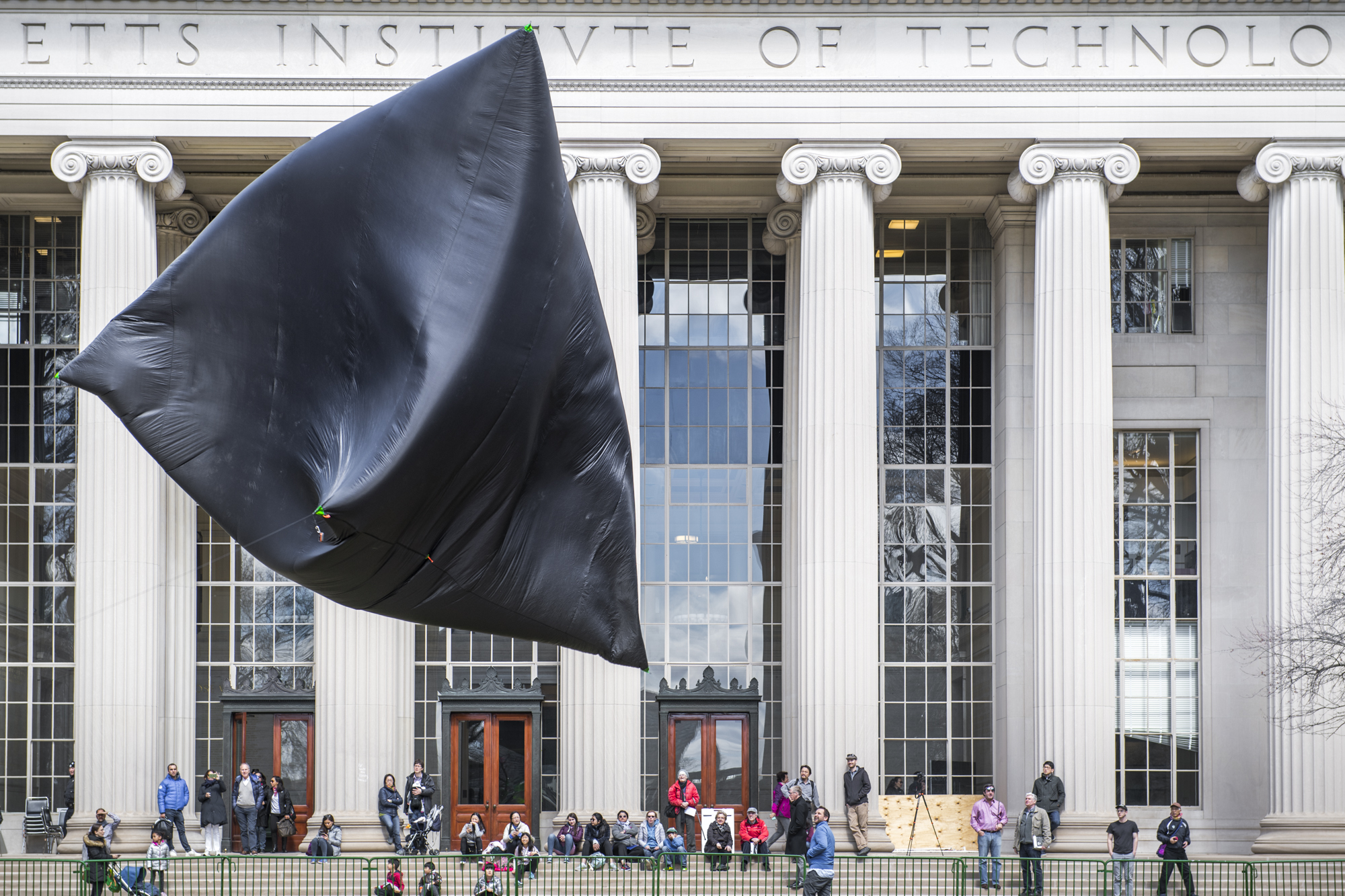 Aerocene sculptures become buoyant by the heat of the Sun and infrared radiation from the surface of Earth. They float following Archimedean buoyancy physics, without burning fossil fuels, without using solar panels and batteries, and without helium, hydrogen and other rare gases.
Aerocene sculptures become buoyant by the heat of the Sun and infrared radiation from the surface of Earth. They float following Archimedean buoyancy physics, without burning fossil fuels, without using solar panels and batteries, and without helium, hydrogen and other rare gases. 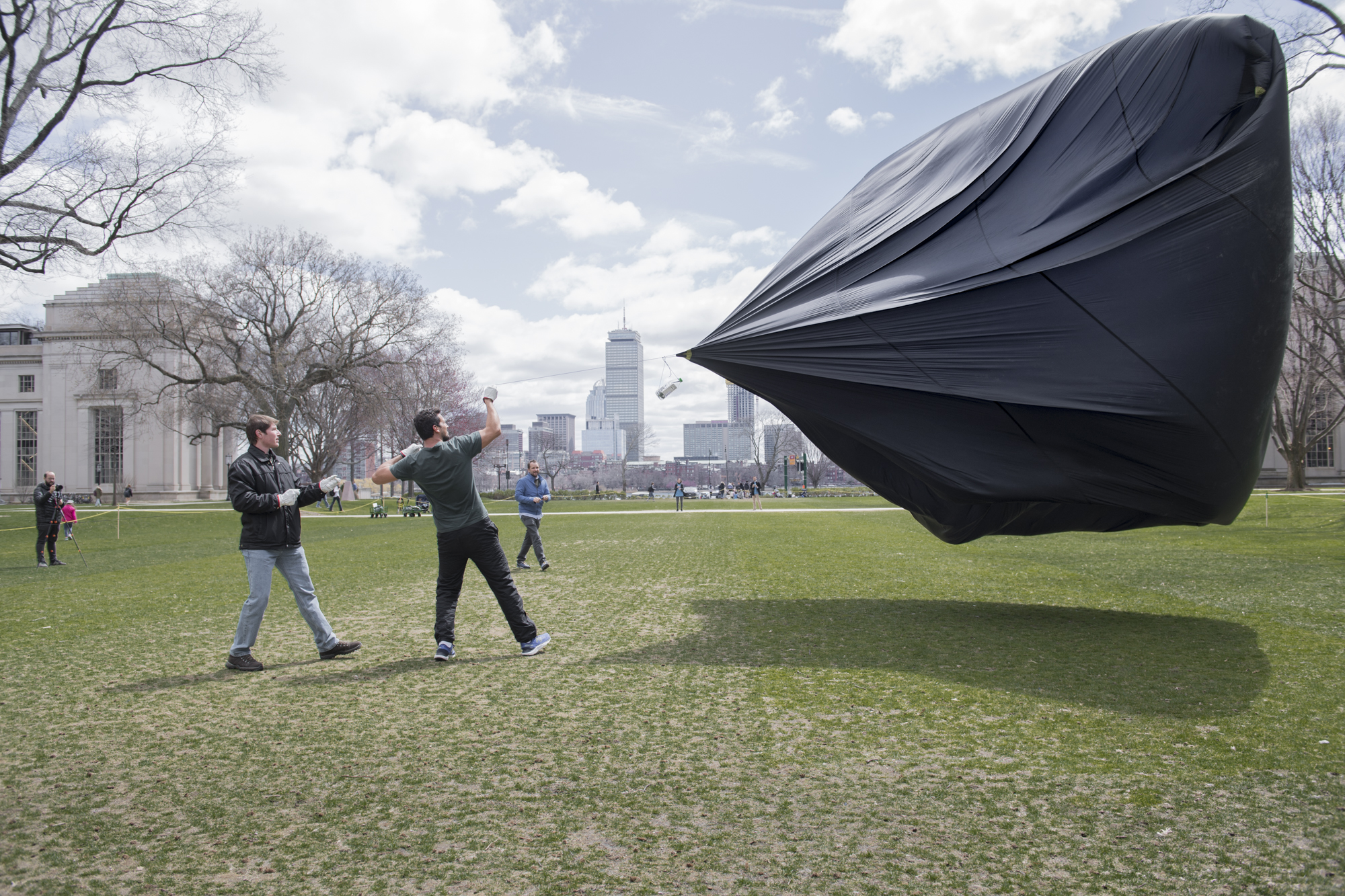 Sun lift and wind create huge forces, gloves are used to protect the Aerocene pilot’s hands
Sun lift and wind create huge forces, gloves are used to protect the Aerocene pilot’s hands
On April 20 and 21, in a collaboration between artist Tomás Saraceno and a few of the EAPS scientists, one of the Aerocene Explorers was brought to our campus. It is a Mylar balloon, crafted with the sole purpose of keeping itself aloft without the use of fossil fuels. Instead, it uses the power of the sun, as explained by researcher Lodovica Illari. The sun warms up the air within the confines of its Mylar and causes it to rise. While up in the air, it continues to twist and turn due to the infrared radiation.
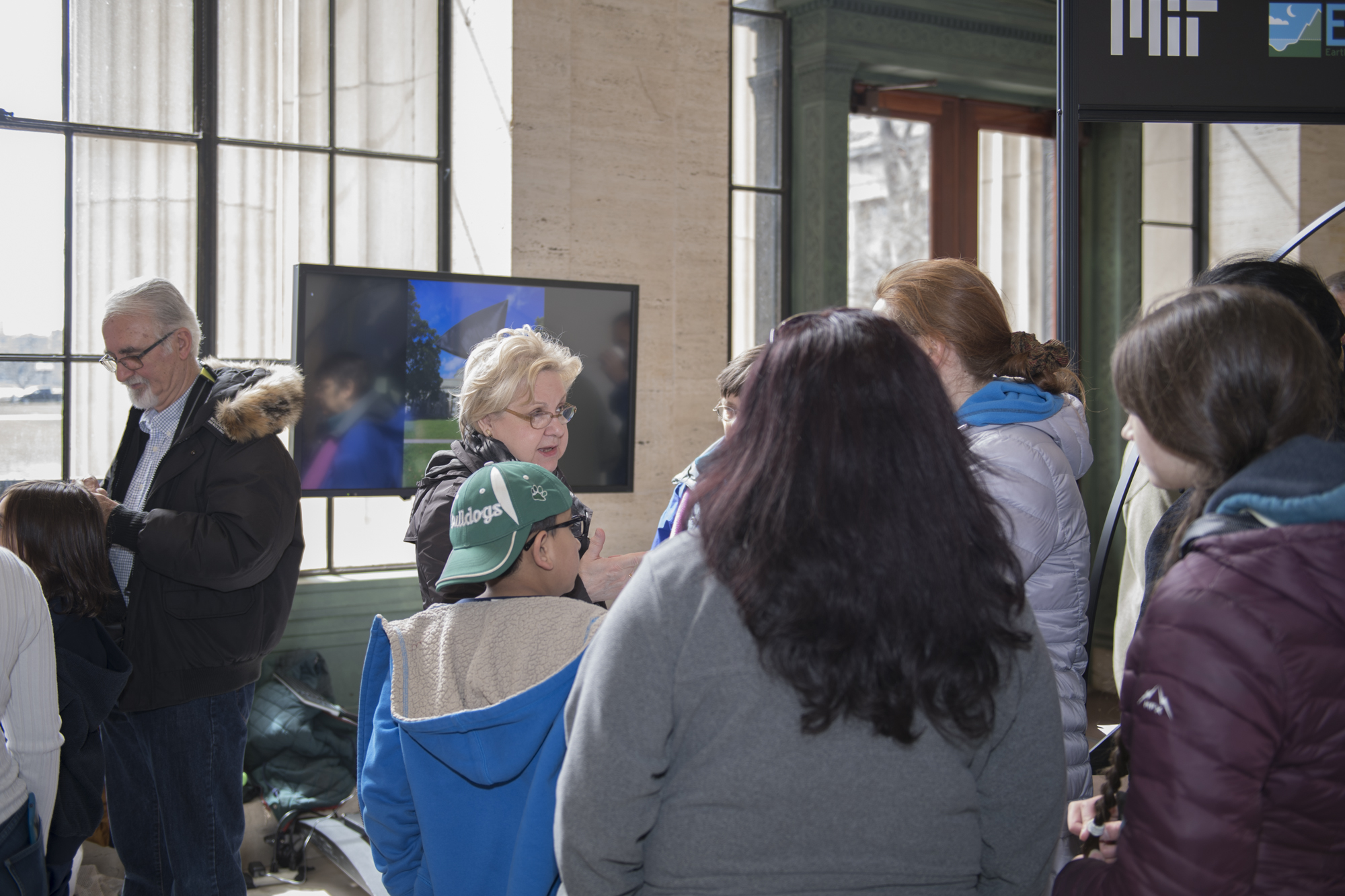 Lodovica Ilari from MIT EAPS explains the inner workins of the atmosphere to a young audience.
Lodovica Ilari from MIT EAPS explains the inner workins of the atmosphere to a young audience.
In addition, a small detector is attached to one of the corners of the balloon. Its purpose is to record the level of pollutants from the surrounding area. When I talked to Professor Illari about some of the data that it produced, she led me away from the strange artwork to a screen within Lobby 10. Every few minutes, the monitor would show a different graph with information that was being relayed in real time from the detector. She gushed about the prospects of using this detector in combination with this type of airborne vehicle, saying that it “is friendly with the earth” since it “is powered by the sun.”
Despite all of the scientific elements of Aerocene, the initiative itself is still a performance. In fact, a phrase I heard tossed around a lot in conversation with was “citizen science.” Simple in concept but profound in its effect, citizen science has the potential to unite communities all across the world against climate change. “You get everyone gathering data, like crowdsourcing,” added Illari.
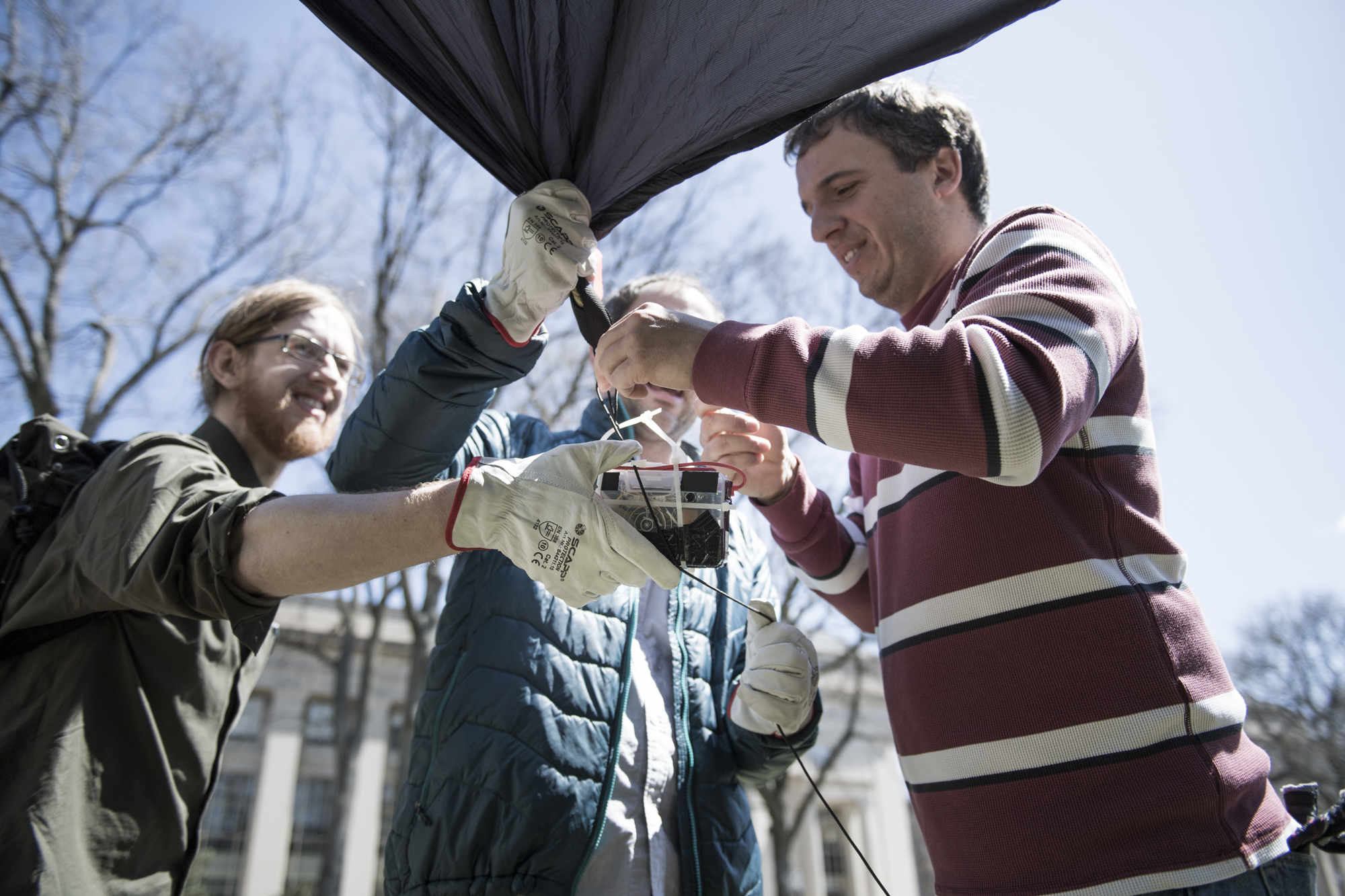
Indeed, this gelatinous creature really did function just like an airborne sculpture. Children stopped running through Lobby 10 to gaze upon the Mylar beast. A few of them asked questions to professors doing demos in the hallway. There were even a couple whose eyes glimmered with excitement as they listened to people such as Illari. “If you can learn in a fun and a playful way, you can raise awareness,” explained Leila Kinney, the Executive Director of Arts Initiative and MIT CAST.
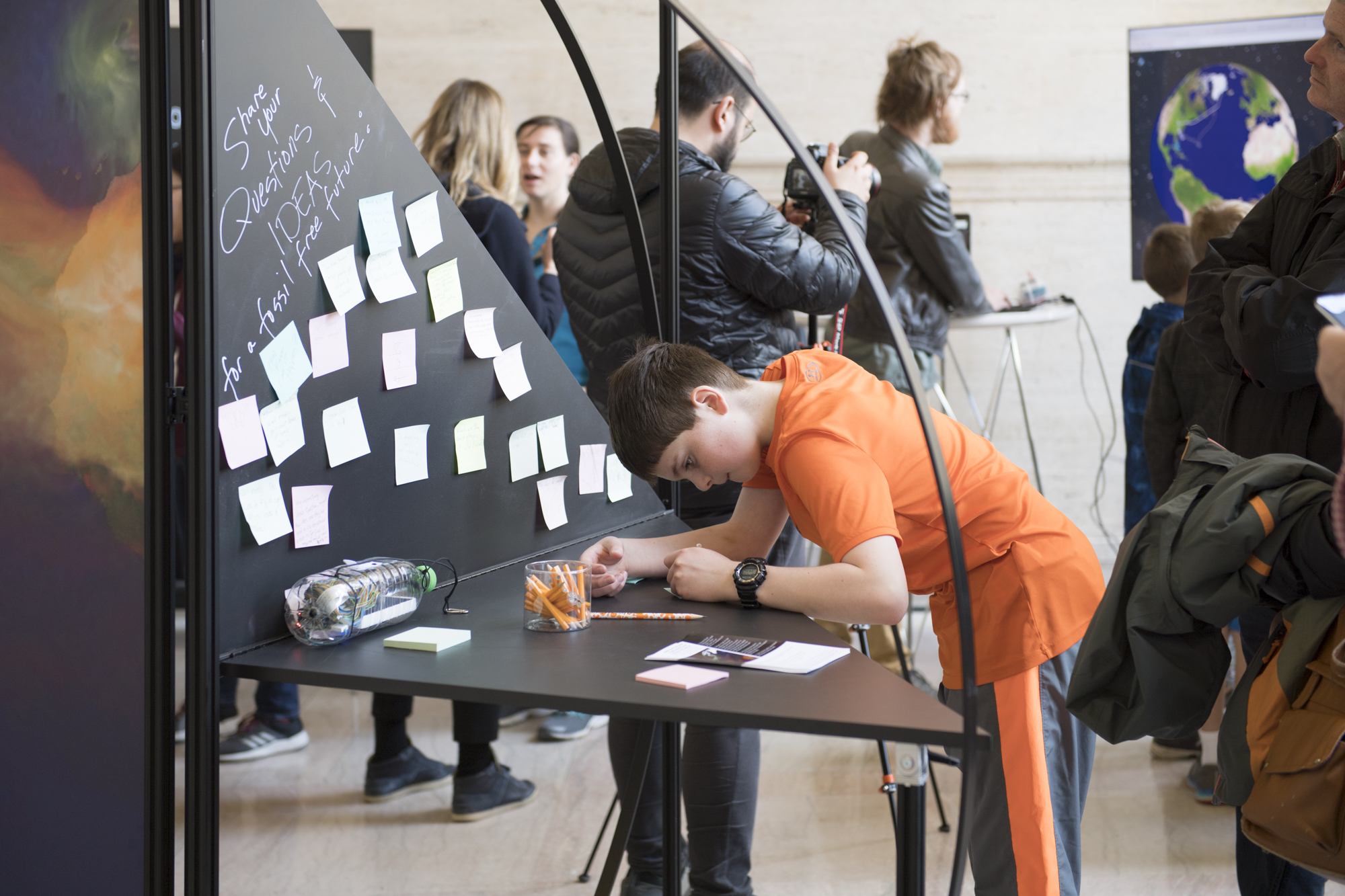
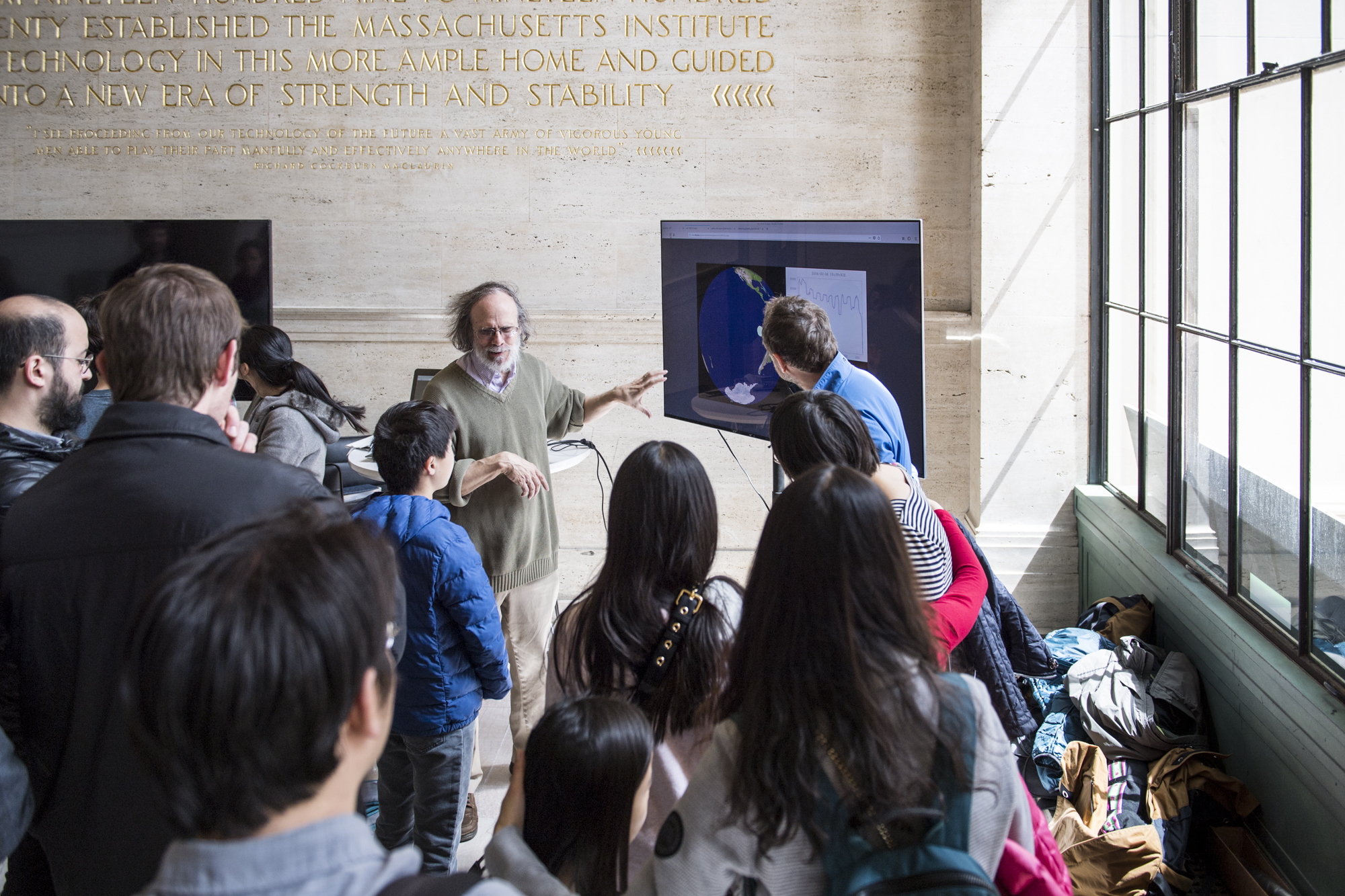
And maybe that’s all it takes for change to start: a few people from the neighborhood simply wondering how they can do something that has a global impact. When asked how this might bring people together to conduct citizen science, Professor Jesse Kroll replied that there really is a “community aspect and a research aspect.”
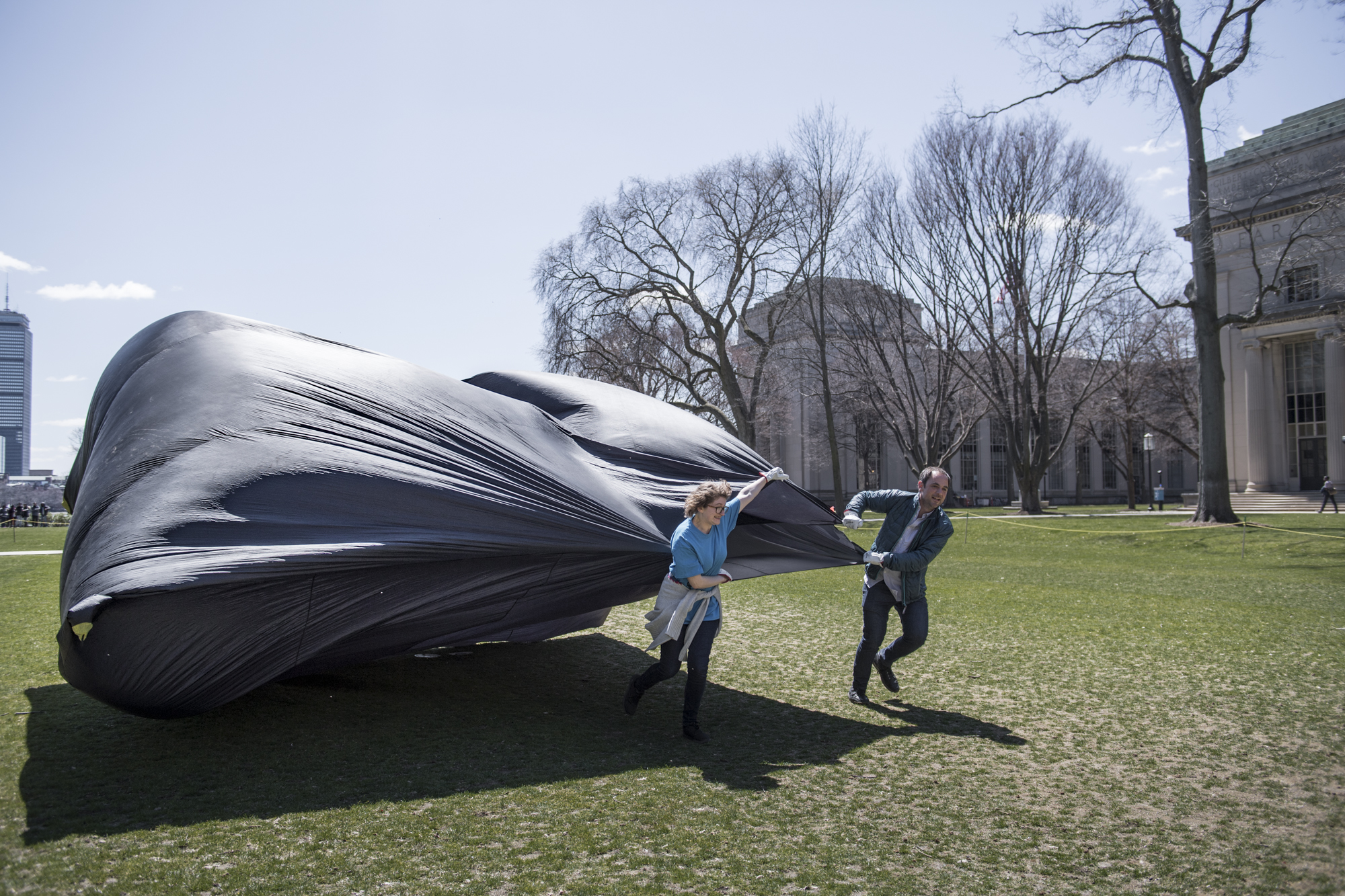 This is how you inflate an Aerocene sculpture: by running and holding it’s opening into the wind!
This is how you inflate an Aerocene sculpture: by running and holding it’s opening into the wind! 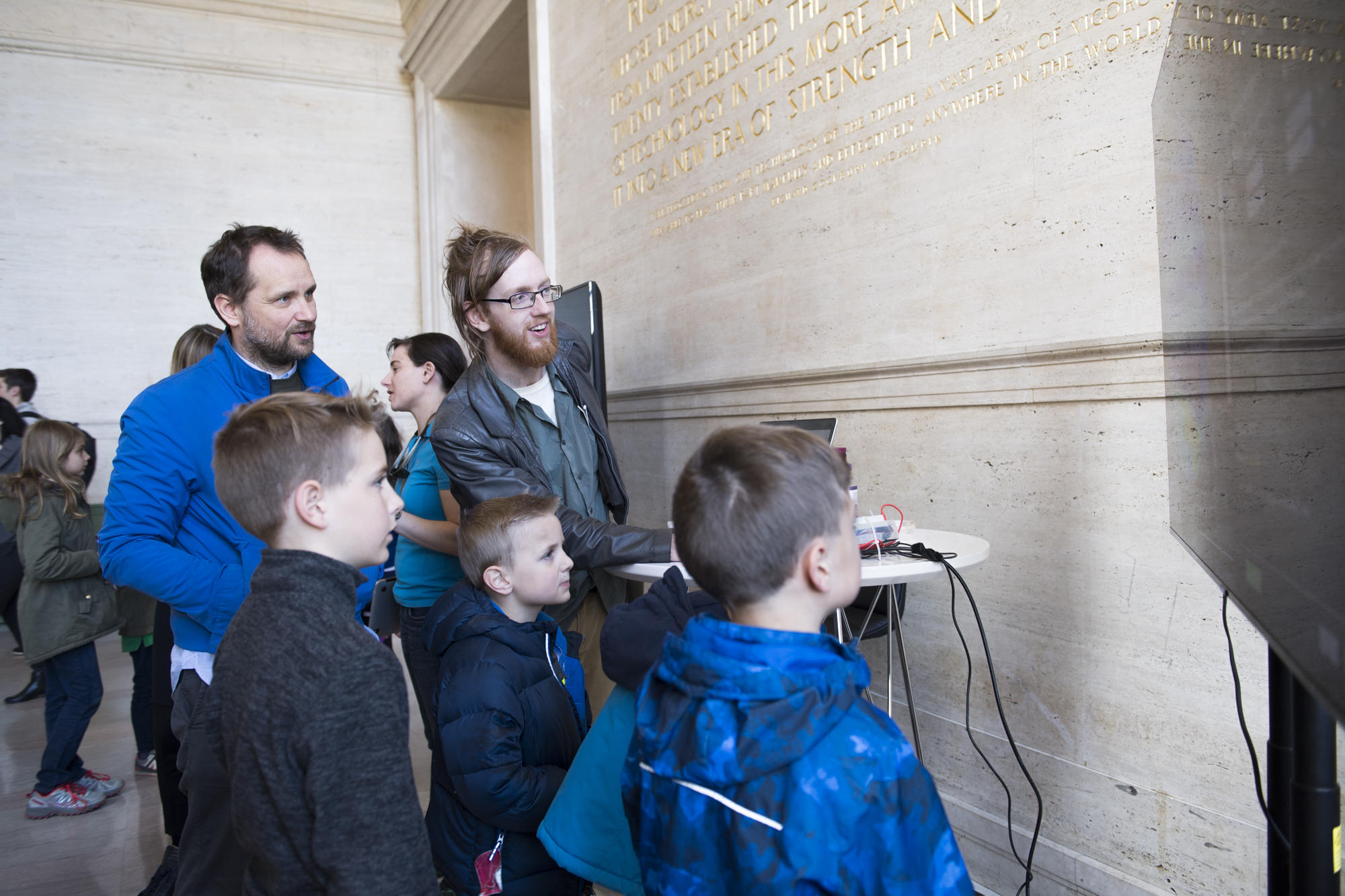 Tomas Saraceno and Bill McKenna showcase the Float Predictor, a tool that allows you to imagine how aerosolar flights could become real
Tomas Saraceno and Bill McKenna showcase the Float Predictor, a tool that allows you to imagine how aerosolar flights could become real 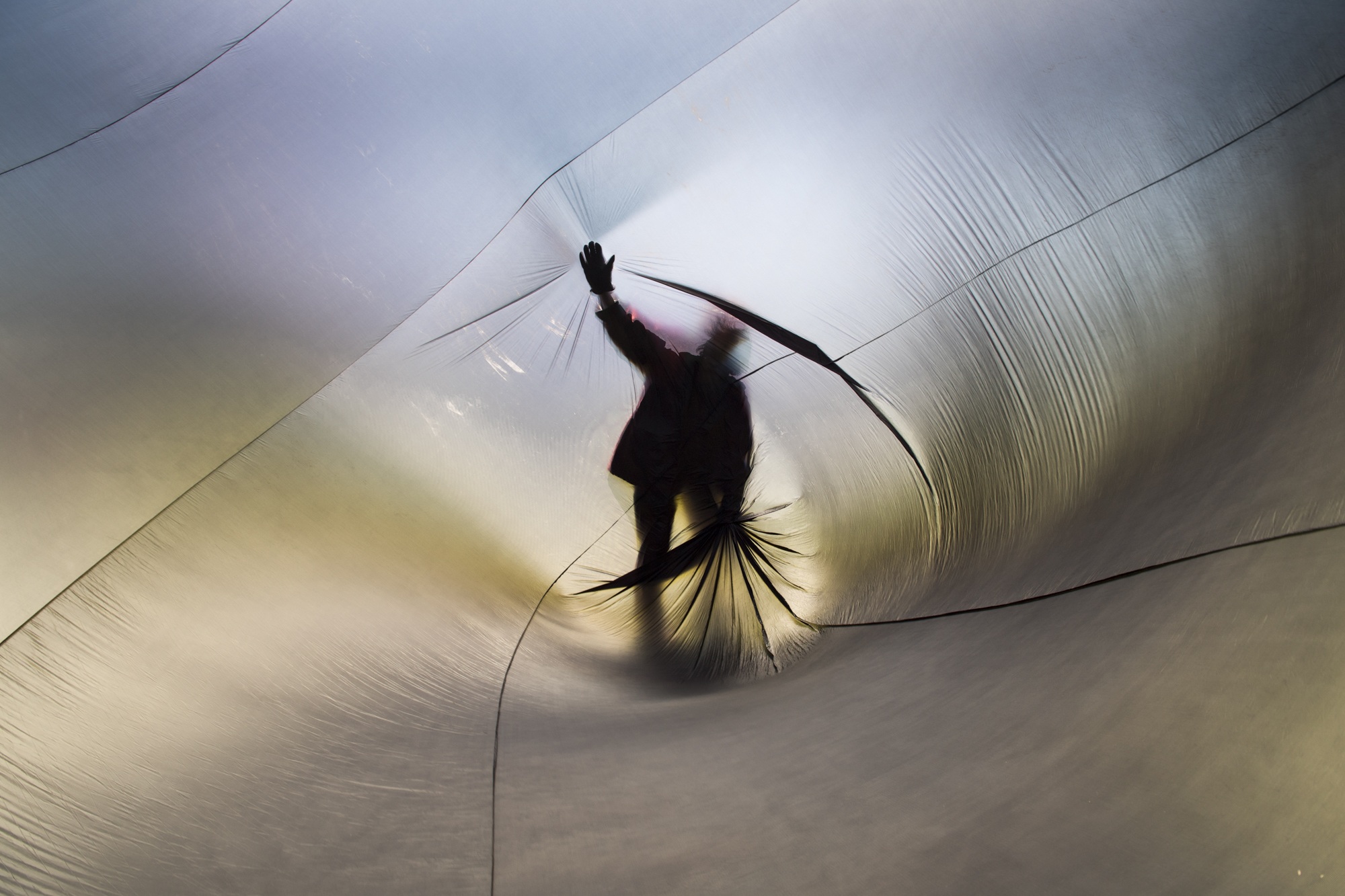
Overall, this outdoors performance was a wonderful complement to the day’s weather. Not only did it raise awareness about how humans affect our world, but it also brought people together under the guise of being a typical art piece. Nothing could be further from the truth — this pitch-black balloon floated in the very intersection between art and science.
Visit aerocene.org for more information about this project.
Credits:
With special thanks to all the crew at MIT Arts and MIT EAPS who made this wonderful event possible.
This article originally appeared in The Tech, issue 12 volume 138. It may be freely distributed electronically as long as it includes this notice but cannot be reprinted without the express written permission of The Tech. Write to archive@tech.mit.edu for additional details.
All photos that illustrate this article were taken by Sham Sthankiya.
Images from the Aerocene onboard instrument were captured live by kite and ballooning enthusiast Mr Jay Venti.
Susurrus meets Aerocene in Dresden
Susurrus meets Aerocene in Dresden
Monday, 5th March
We had a successful launch on Monday the 5th of March, a cold but sunny afternoon in Dresden on the courtyard of Hellerau Festival Theatre. The building has a meaningful history: built in 1911 as a school of Rhythmics, following the 1930’s as a military camp; later the Soviet army used it as their barracks – in the 1990s the site was brought back to life through art. Today it hosts one of the most important interdisciplinary centres for contemporary arts in Germany, Hellerau – Europäisches Zentrum der Künste Dresden. Our international team was privileged to be given a two-week artist residency at Hellerau where we could concentrate on the development of our new transdisciplinary performance creation ‘Susurrus’. Our research into the Aerocene project and launch informed our creative development immensely.
During our 2-hour launch the membrane lifted approximately 3m off the ground. There were quite strong winds so we decided to keep it only part inflated and close to the ground so we could study it’s movement and how it ‘breathed’ in relation to the heating of the air inside the membrane as well as it’s interaction with the air/wind.
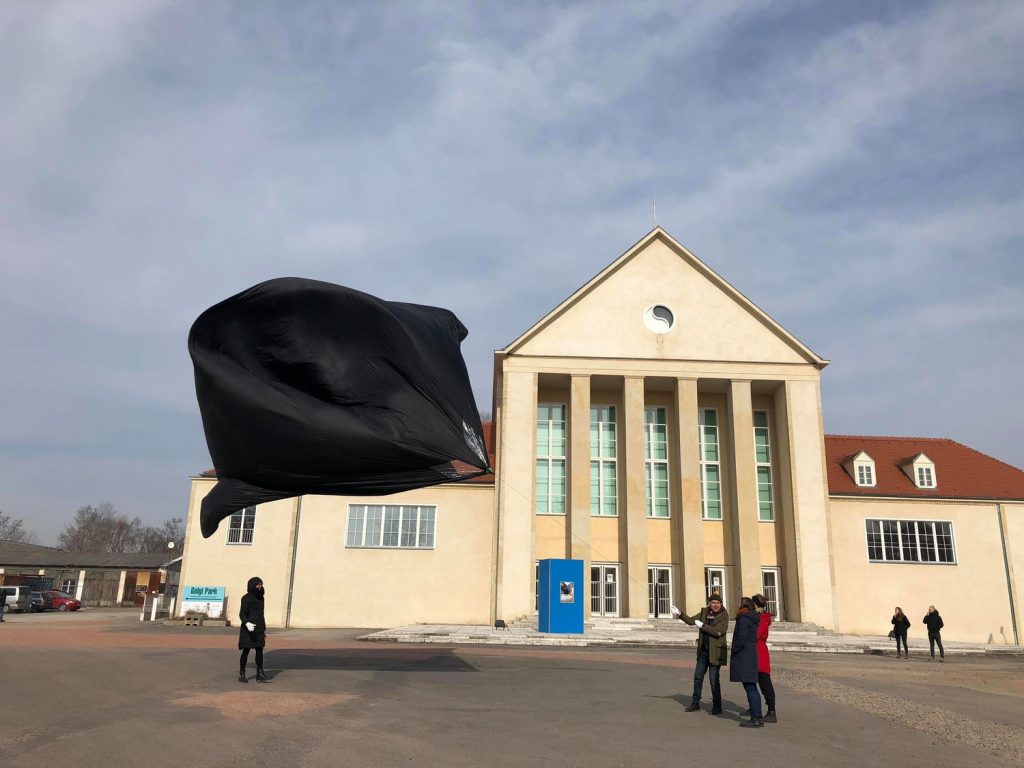
The core of our research within the ‘Susurrus’ project is to encourage environmental awareness through our unique performance language that includes a highly sensitised movement aesthetic, personal anecdotes, sound vibrations and sustainable design. All elements will intermingle in the final performance to create a sensual journey that is alternately humorous, tragic, moving and provocative encouraging audiences to sense their embeddedness within the biosphere.
The name for our creation,’Susurrus’ means a rustle, whisper or murmur. In particular we have focused on the rustle of a stream, murmur of air floating and the undertone/vibration within all living and non-living entities. During the performance a susurrus can also be experienced as a whisper of stories collected by the performer/creators (Renae Shadler and Maria Nurmela) while walking backwards through the various locations they have traveled while creating the work, and in particular along, or ‘entlang’ meaning ‘by the side of’, a stream. During ‘Susurrus’ the performers recreate these landscapes, noticing and engaging with the scenery, inhabitants, our social context and environment with a surreal-edge and contagious pleasure in the unknown.
More information HERE2.
Below is an interview with Renae Shadler and Maria Nurmela
https://www.facebook.com/HELLERAU.FAN/videos/1792891807399281/
During our creative process (started in May 2016) we encountered Tomás Saraceno and his works. We were especially taken by Aerocene project. Tomás’s idea of Aerocene as a starting of a new era after anthropocene; Aerocene Foundation as a new community, conscious of ecology and humanity; but as well Aerocene as a ethereal and aerial, soulful, moving/dancing sculpture inspired us immensely. The creative team related physically and emotionally to many of the writings within the Aerocene publications. Samuel Herzt wrote “The body must be viewed as a porous entity—as flexible as any environment in which it can exist, and pre-supposing intimate, consistent, and inextricable exchanges between human and environment” [“Swift Wind: Hearing Environmental Affect”, Aerocene Exhibition Road Publication, page 130].
These ideas resonated strongly with our practice of embodied explorations and choreographic ideas.
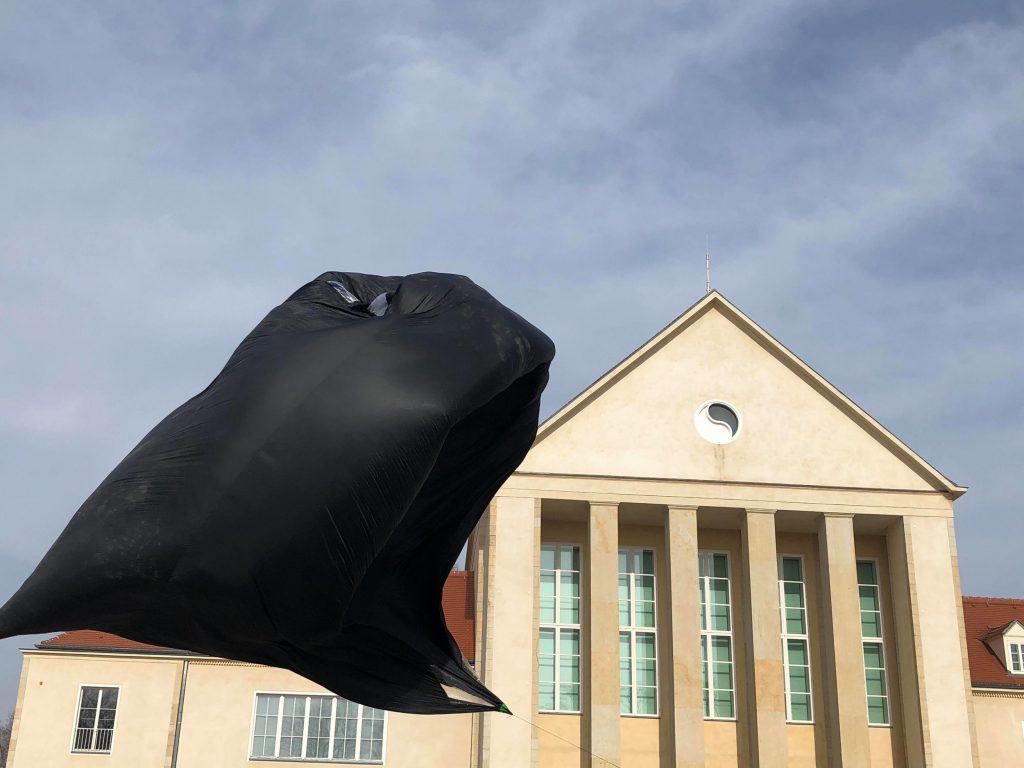
“I bound Aerocene with its air-like and membranous quality strongly to my contemporary dance practice, and to our values and wishes of exploring humane embodiment and its potentials”
(Maria Nurmela, co-creator/performer, Hellerau 2018)
Aerocene prompted us to ask,
- how do we collaborate with the air in performance? (…caressing, noticing, being moved by it…)
- Could we creatively reimagine the eternal destiny of a human-being that is bound to the earth with its gravitational pull?
- How could sustainable and ecological matters be embedded in performance art and within the theatre?
Aerocene had a strong influence on the aesthetics of ‘Susurrus’, “Engaging with the Aerocene project was for me an interesting investigation, how it would be possible to create anything similar on stage to behave like the Aerocene; which needs sun and wind; and which moves and behaves so beautifully. I have chosen my design material (plastic) because it reminds me of the lightness of the membrane. I’m also going to try to do a flying object on stage using a fan and infrared light. So for me the experiment with Aerocene has already given a lot.“
(Kalle Ropponen, lighting designer, Hellerau 2018)
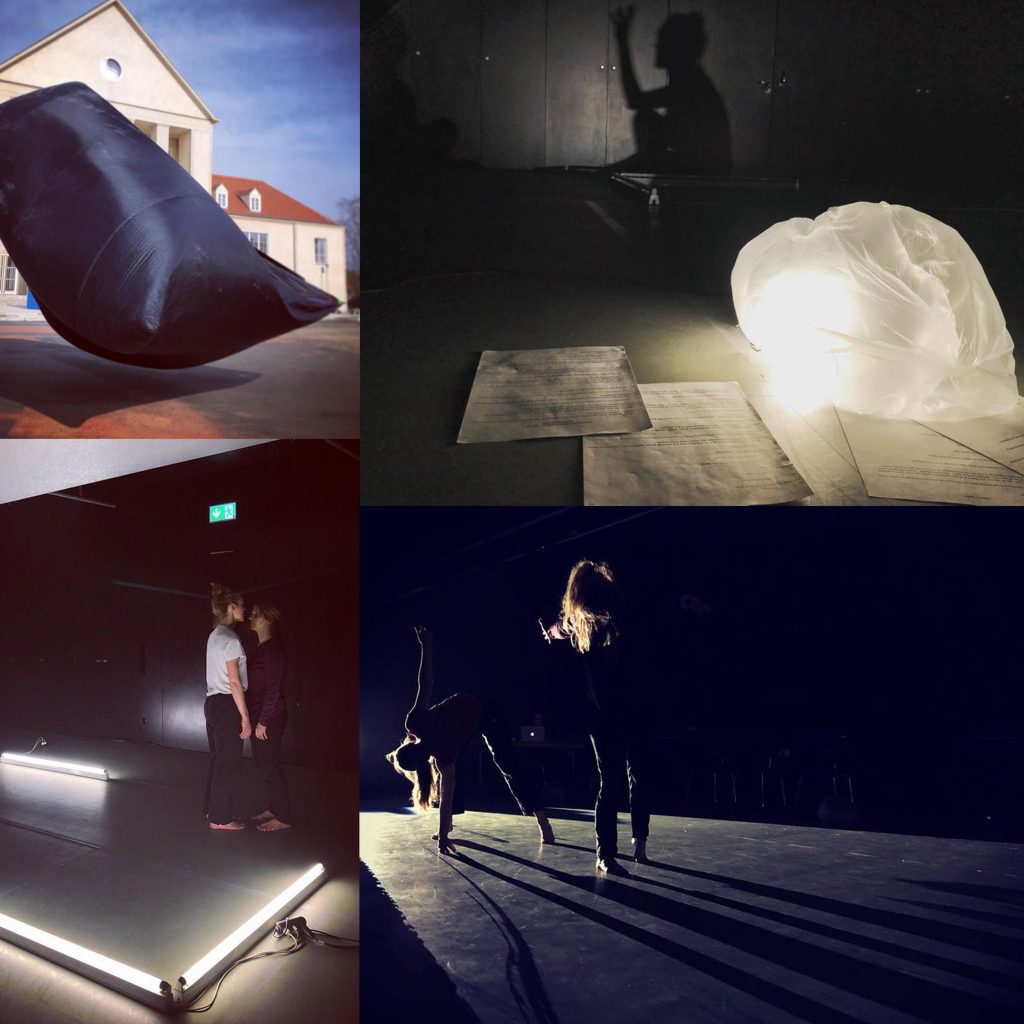
To experience Aerocene´s pure movement through wind – lightness but in the same time the massive power – held a strong poetic value for us. It brought a new ethereal and transcendent quality to the sensitive and surreal world that we aim to transmit. Like the Aerocene, ‘Susurrus’ is facilitating a performative experience where the audience and performers share a dream-like state of being part of and within their surroundings: “A space as breathing fragile porous organism and room filled with bodies in tense relation, with strange and alluring instruments, with breathless speeds of thought, with friends, family and kin.” [Aerocene Exhibition Road Publication].
We would like to thank the Aerocene Foundation for loaning us the Explorer Kit and look forward to continuing a dialogue with the Aerocene community.
‘Susurrus’ Creative Team – Concept, Choreography & Performance: Renae Shadler ,
Maria Nurmela. Light design / Set design: Kalle Ropponen, Sound design: Korhan Erel
Aerocene San Luis Expedition Logbook 2017 / 2018
Aerocene San Luis Expedition Logbook
2 November 2017 – January 8th 2018
Team
- Tomás Saraceno
- Sofia Lemos > Researcher
- Joaquin Ezcurra > Operations & flight visualization
- Maxi Laina > Videographer
- Martín Maillos > Cameraman & drone operator
- Martin Torres Manzur > Sound recording
- Flor Groppa > Photographer & drone operator
- Gabriela Maillos > Logistics
- Eduardo Marengo > Positioning
- Camilla Berggen Lundell > Communications, Berlin
- Erik Vogler > Solar Sculptures Development, Berlin
Thursday November 2nd 2017
1100hs: Meet Mr. Juan Tabernero at EANA, over mate and some medialunas we discuss about restricted airspaces and air traffic control in Argentina.
November 2017
Flight planning. Overlapping Flightradar.com airspaces and Google Earth satellite imagery in order to assess Aerocene free flight operations.
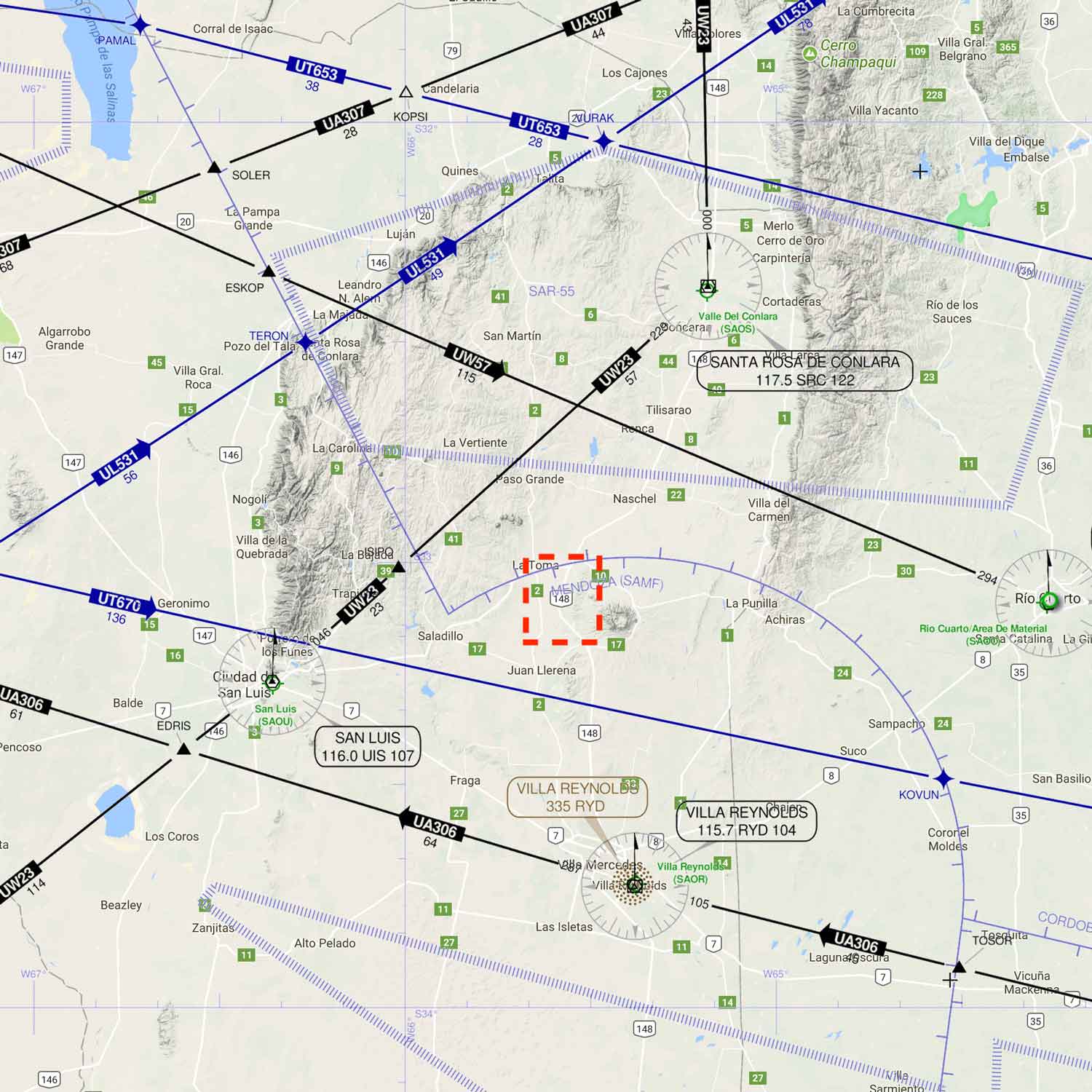
Tuesday December 19th 2017
We are authorized to do first aerosolar free-flight in Argentina.
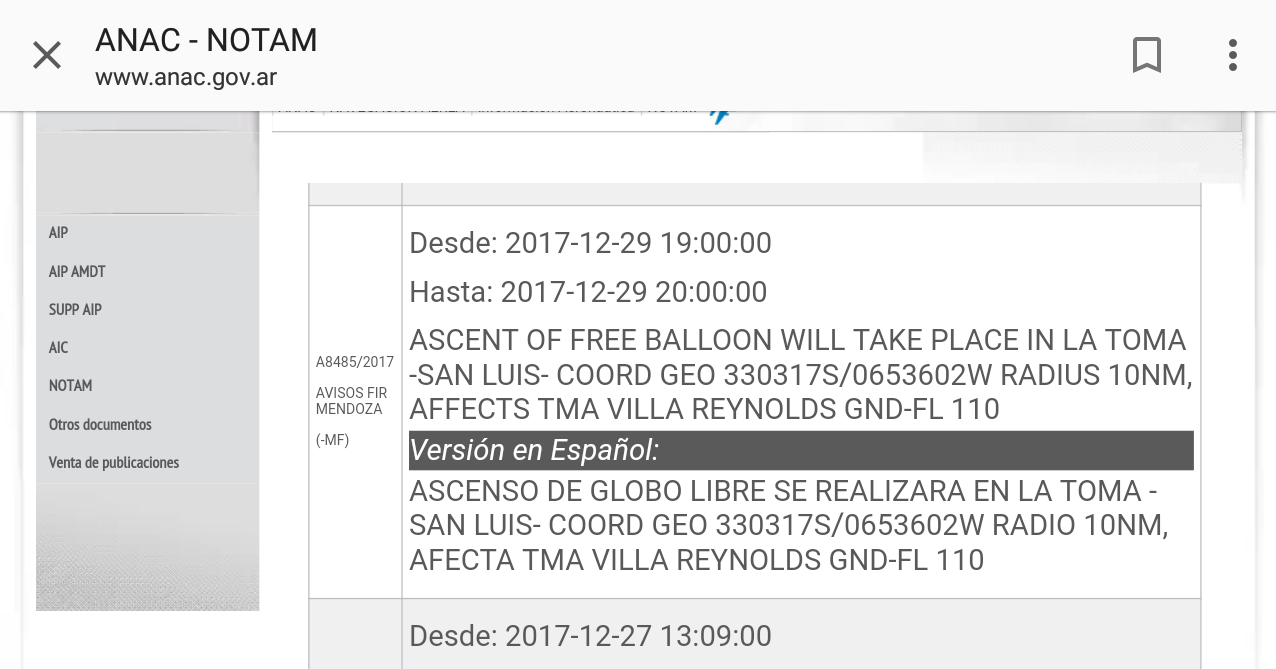
Tuesday Dec 26th 2017
We have good weather forecast for wednesday, thursday and friday. Requested the free flight date change for thursday.
Wednesday Dec 27th 2017
1600hs > Arrived at El Durazno, San Luis. We launch Mavic Drone and learn the basics from Tomas. Footage filmed.
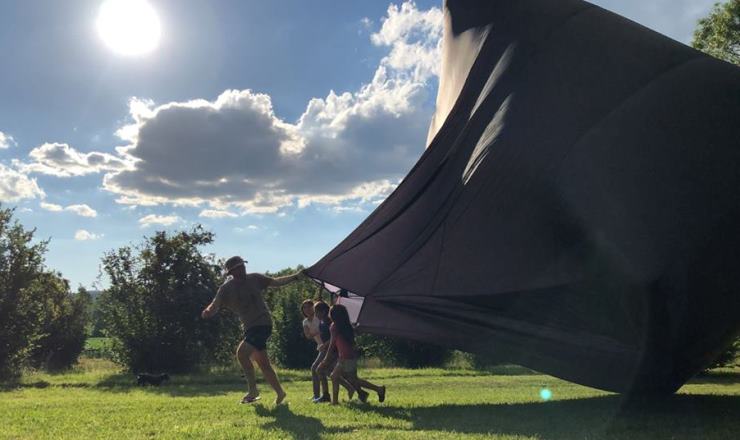
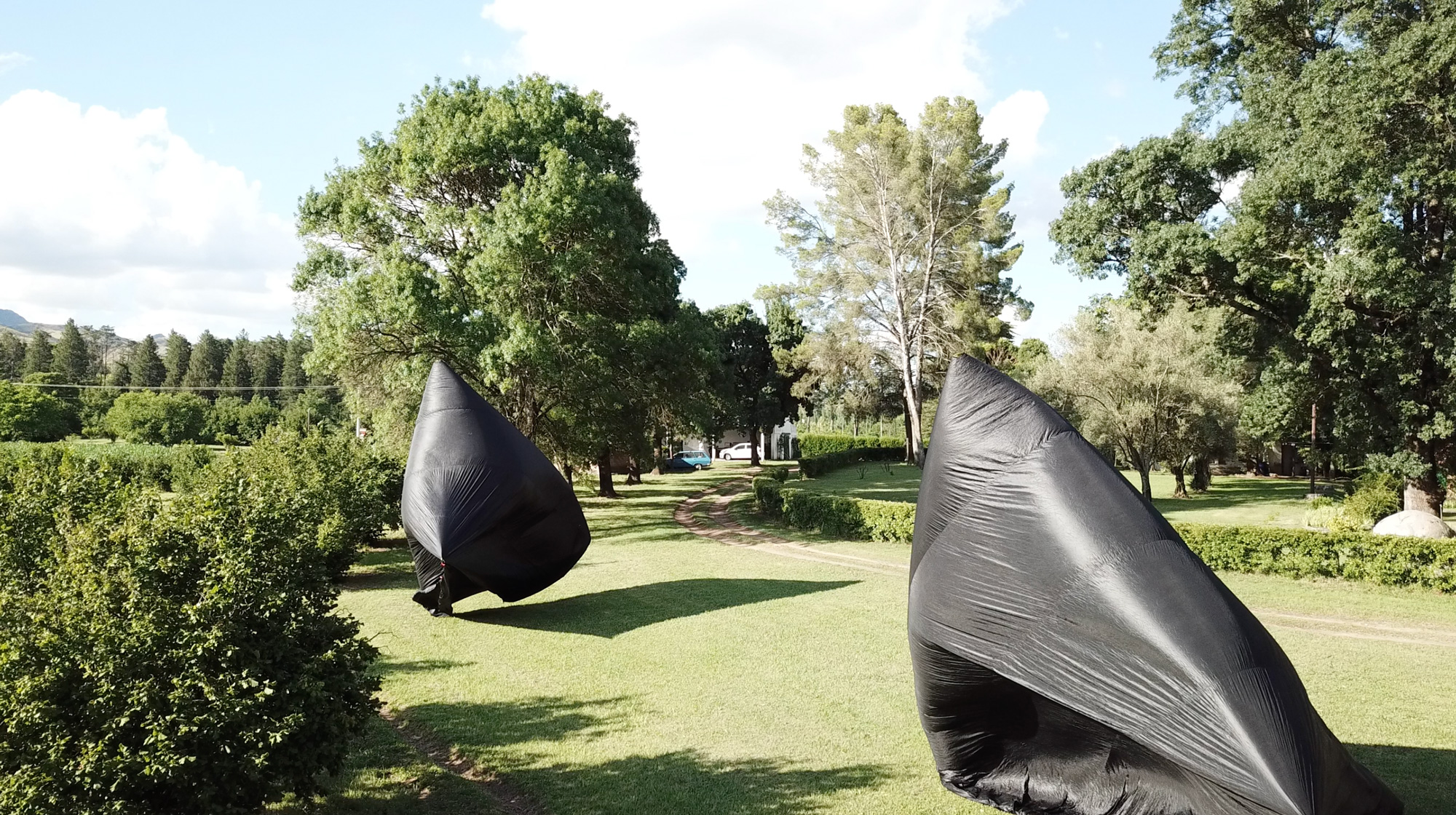
Thursday Dec 28th 2017
Weather > Sunny, 23C, northerly wind at less than 10 km/h
Maderos, Dique La Florida > S 33° 07’ 12.6” W66° 02’ 29.5”
0800hs > Arrived at Puerto de Maderos, El Trapiche, province of San Luis.
1000hs > We begin inflating balloons prepared in Berlin for Air-Water-Air Experiments.
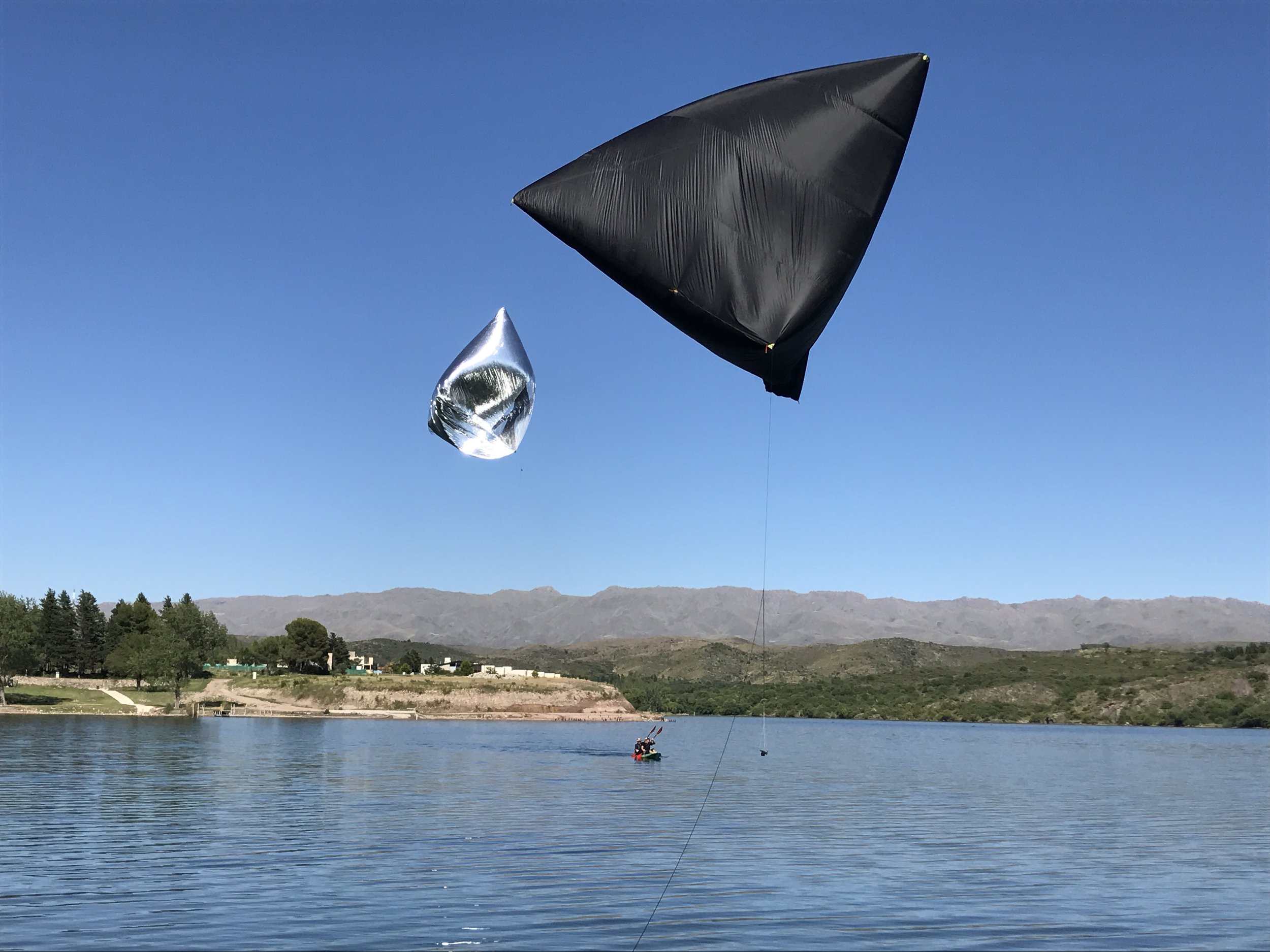
1100hs > Explorers and Air-Water-Air balloons fly with GoPro cameras above Dique La Florida. The balloons were fitted with high definition microphones to record the sound of the atmosphere.
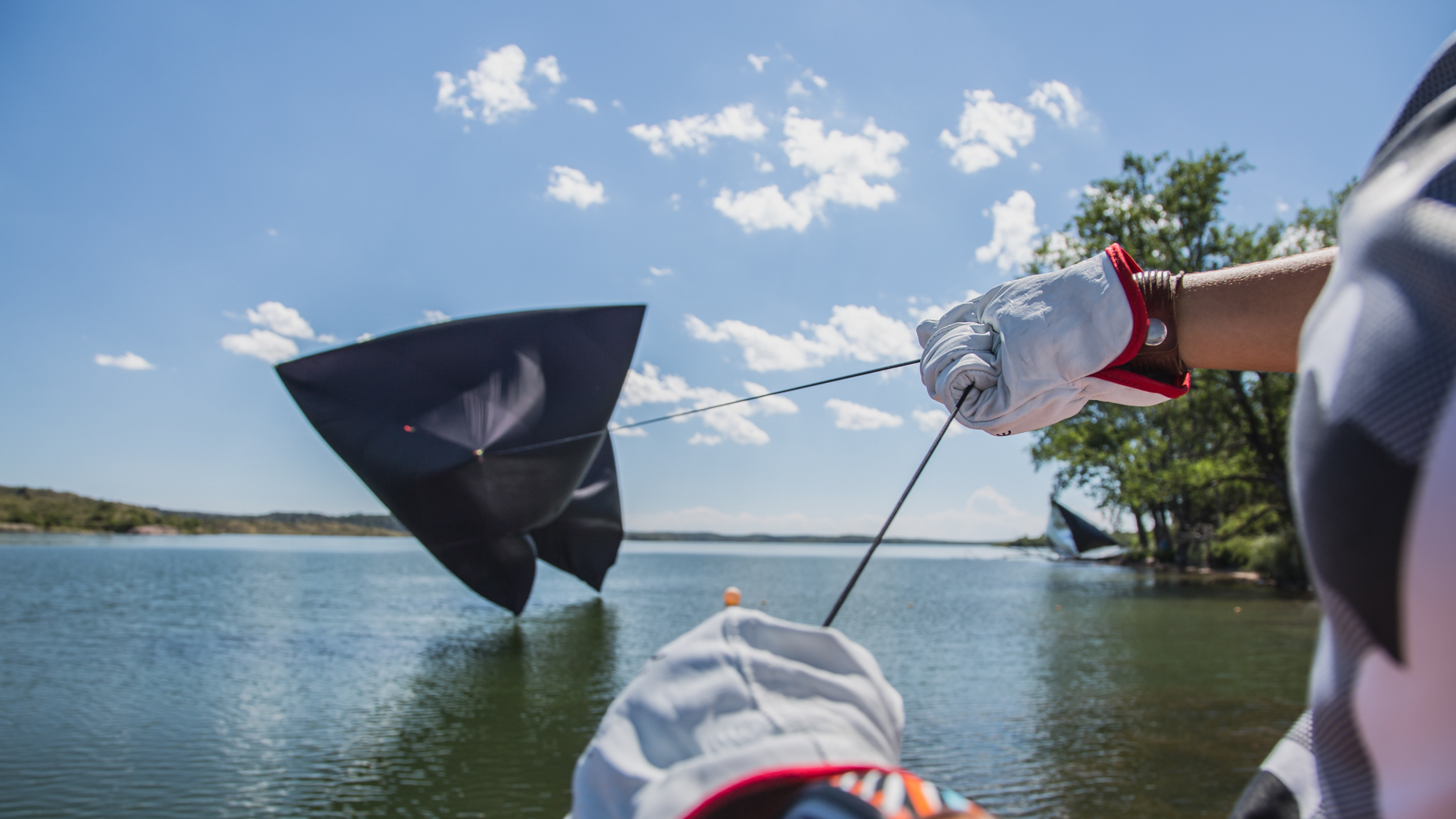
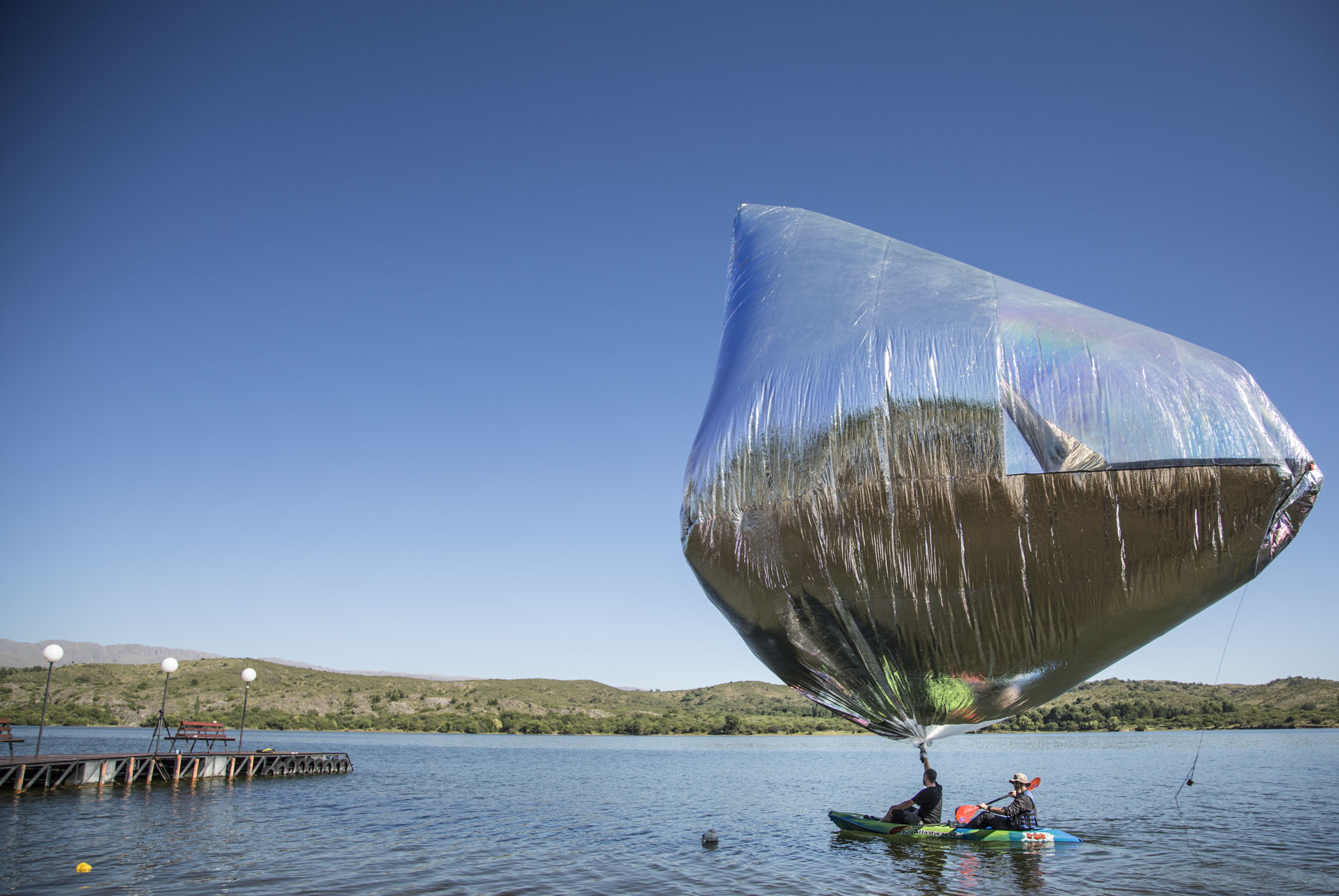
1200hs > Air-Water-Air experiments: the Explorers outshined all other balloons on their ability to get wet and quickly rise again.
Friday Feb 9th 2018
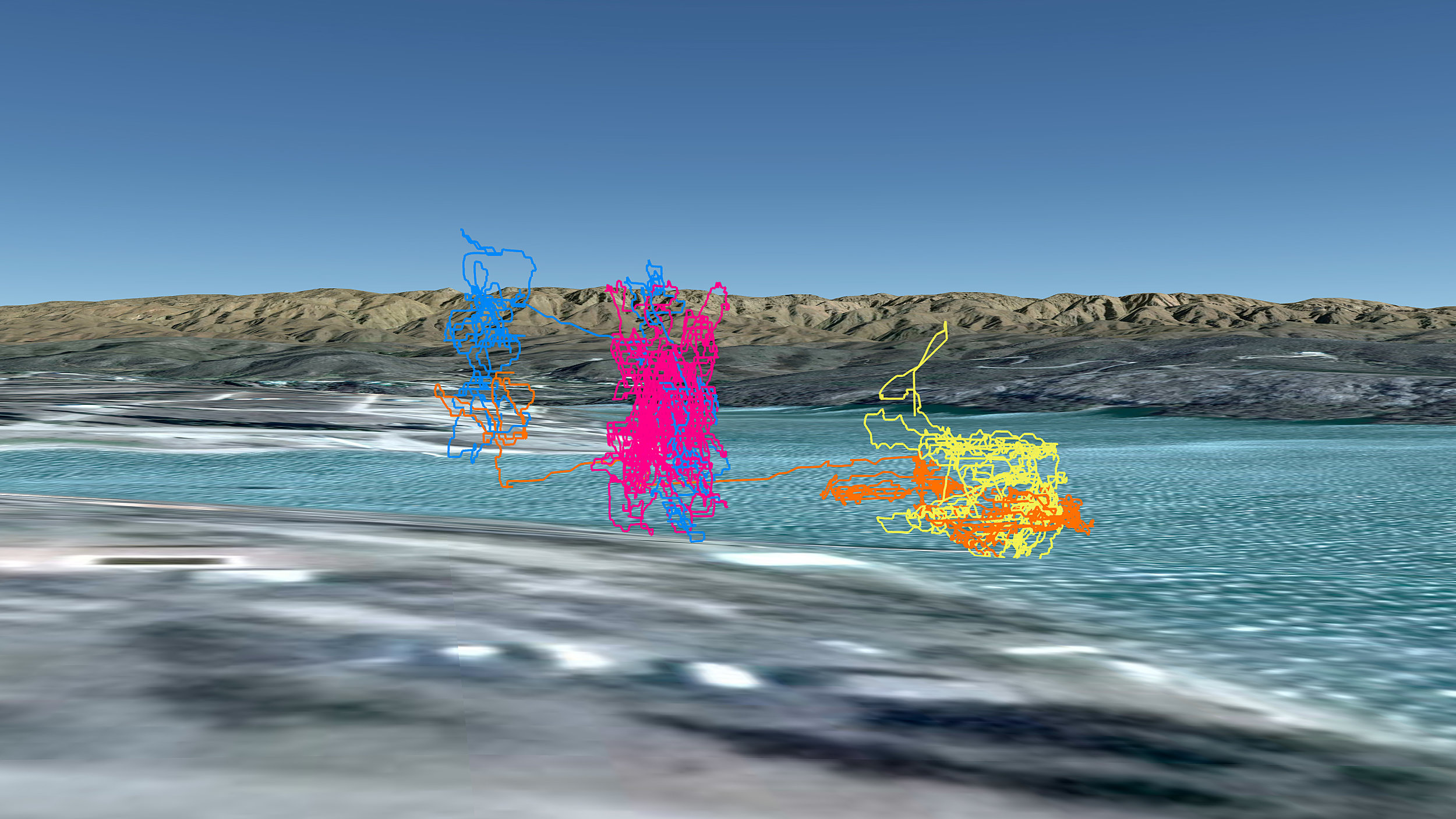
Flight visualization for balloons #aeroceneexplorer AE032, AE034, Air-Water-Air I and Air-Water-Air II. Their flight path data was recorded using a Garmin GPS and then processed with Garmin BaseCamp and Google Earth using the KML (Keyhole Markup Language) format.
Due to Google Earth’s topographic model weak accuracy, we had to calibrate the balloon’s path using KML’s altitudeOffset command.
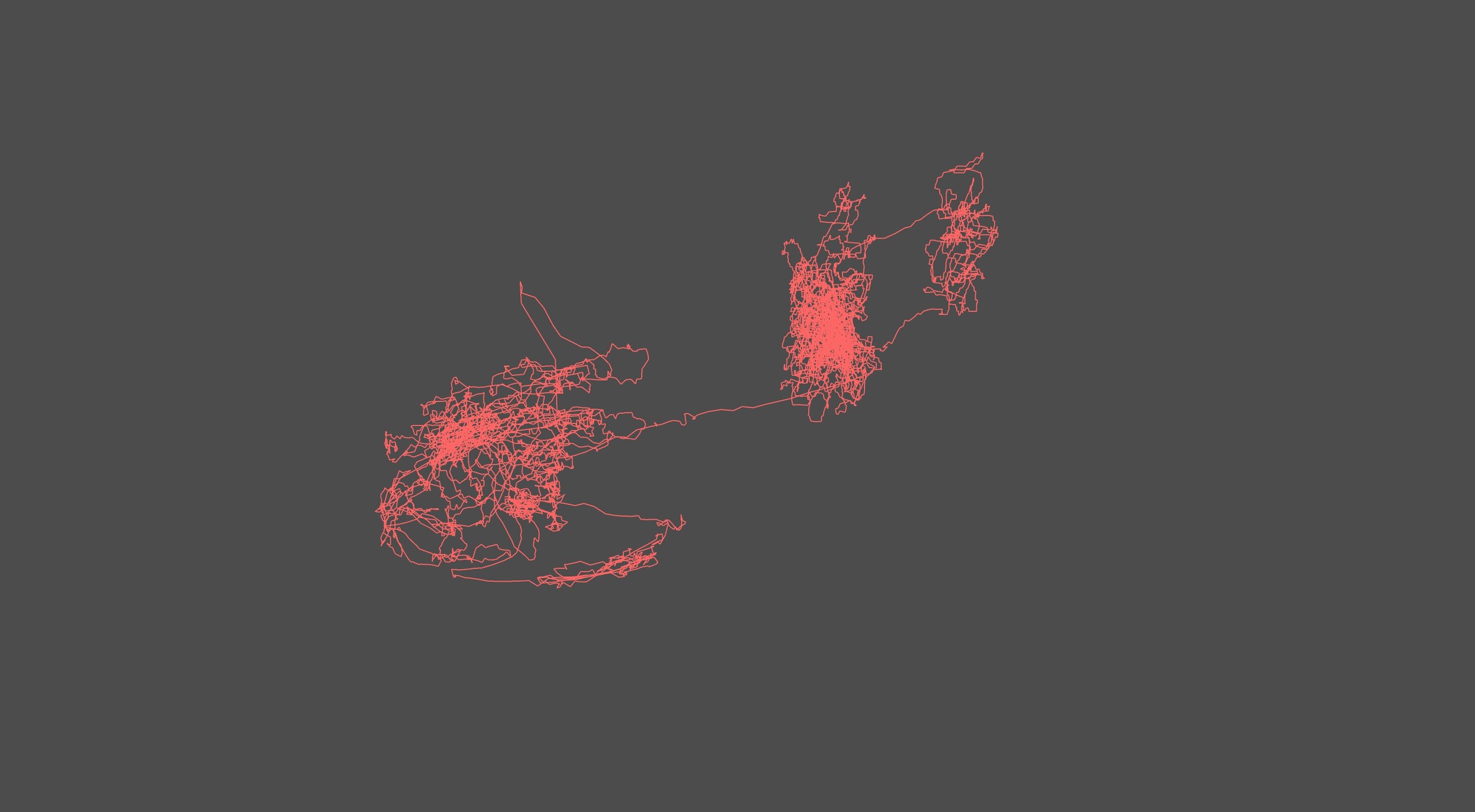
An isolated trajectory from the Puerto Maderos flights using Trimble SketchUp software.
Thursday Dec 28th 2017
La Toma > S33° 03’ 18.0″ W65° 35’ 53.8″
Weather > Sunny, 34C, north-easterly wind at less than 12 km/h, increasing slightly
In the afternoon we move to La Toma to have a go at free flight.
1600hs: We attempt a free flight, there is little wind, our Gemini free-flight sculpture slowly rises, to begin going down. Payload seems to be to heavy for the amount of insolation. We give it another go by running and accompanying the balloon, but it doesn’t take off. We decide to call off the flight and protect the equipment.
We reach Eana authorities and receive authorisation for a flight the following day.
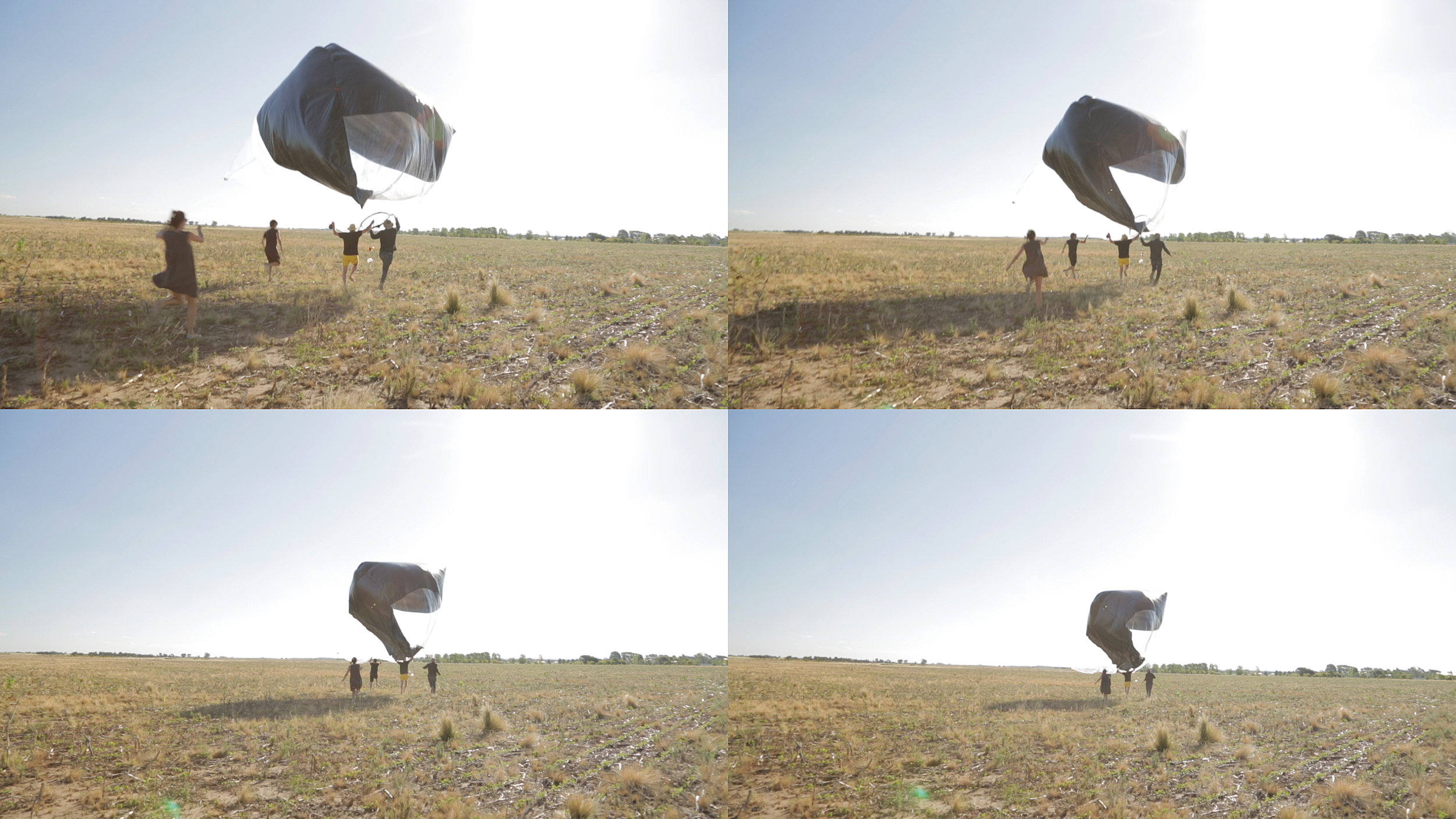
Friday Dec 29 th 2017
Weather > Sunny, 35C, northerly wind blowing at 22 km/h
La Toma, San Luis > S33° 03’ 18.0″ W65° 35’ 53.8″
Unfortunately, high wind conditions prevent the balloon from taking off again. We gave our hearts and souls and our take off attempts are filmed by a drone. These are also part of the negotiation proposed by Aerocene, our will to do things and the swinging moods of the atmosphere.
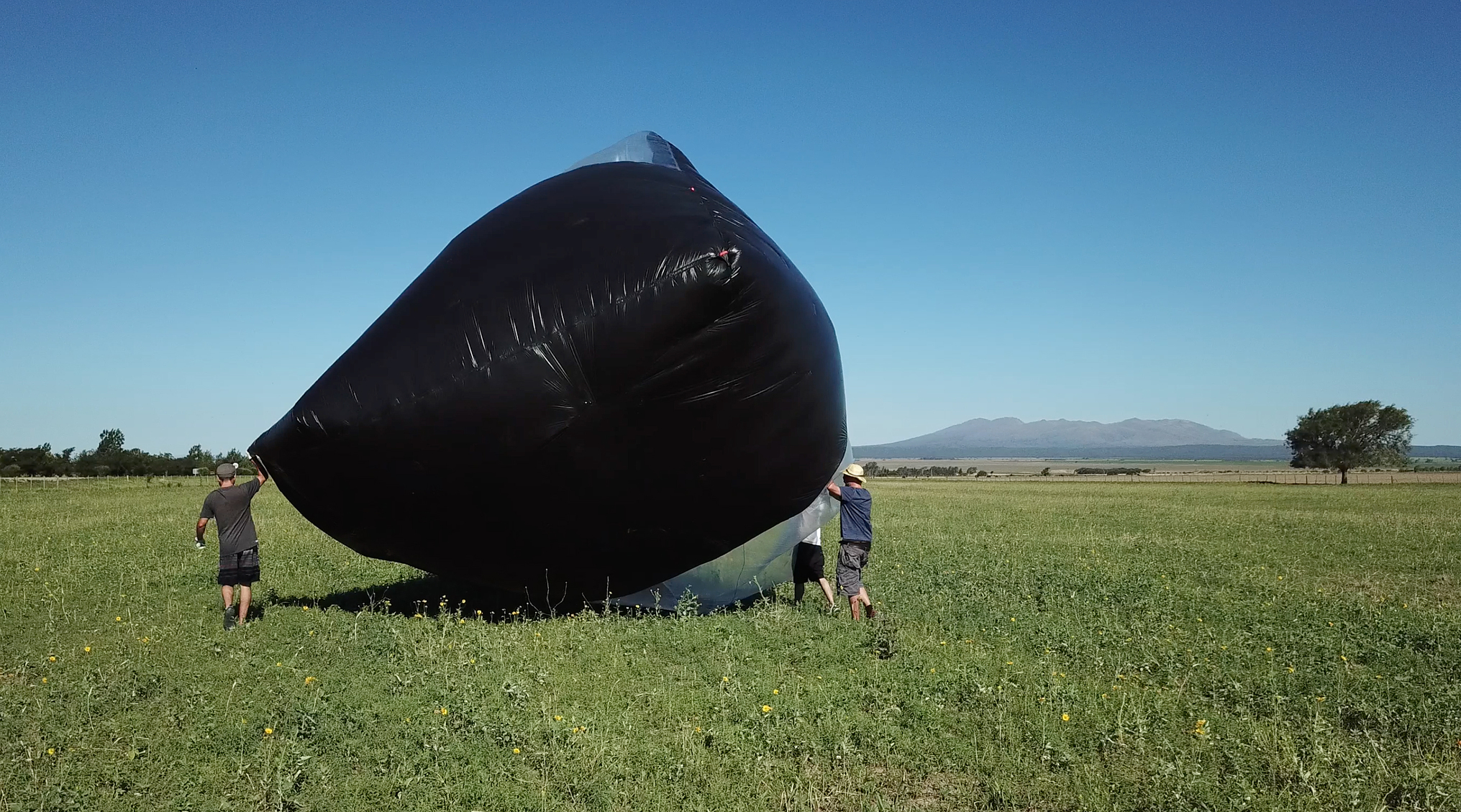
Aerocene free flight balloon in La Toma, with the Cerro El Morro in the back, created by volcanic processes 1500 million years ago.
We did succeed in creating rapport with Argentina flight authorities, keeping them informed at all times about our activities and complying with all legal regulations.
Hopefully the experience gained will be valuable for future free flights (or free floats) around the world, stressing the importance of humanity learning to live in relationship with the Atmosphere in the Aerocene era.
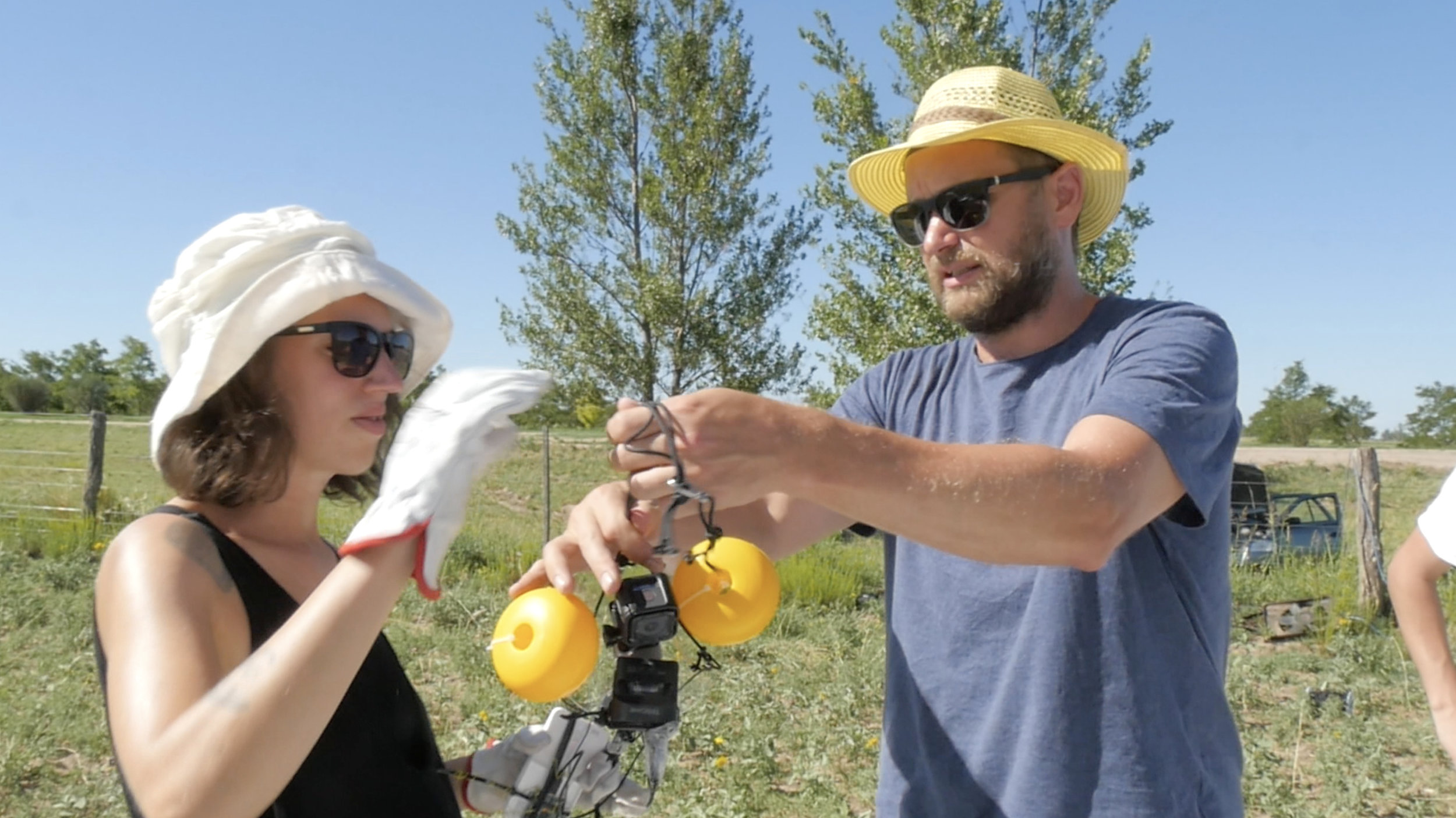
Monday January 8th 2018
Estanzuela, departamento de Chacabuco, San Luis
An Aerocene Explorer is launched by local community, registering flight path information.
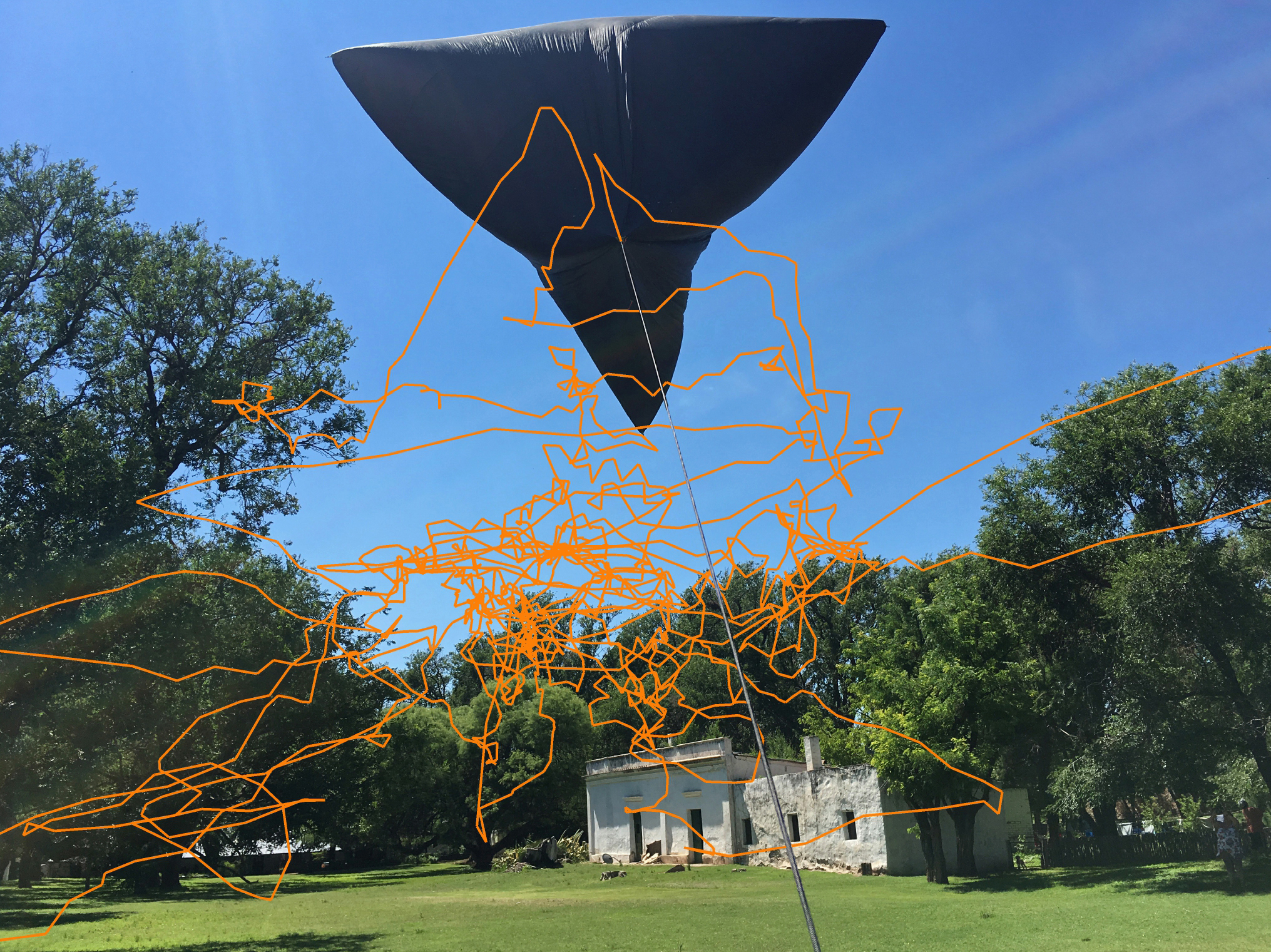
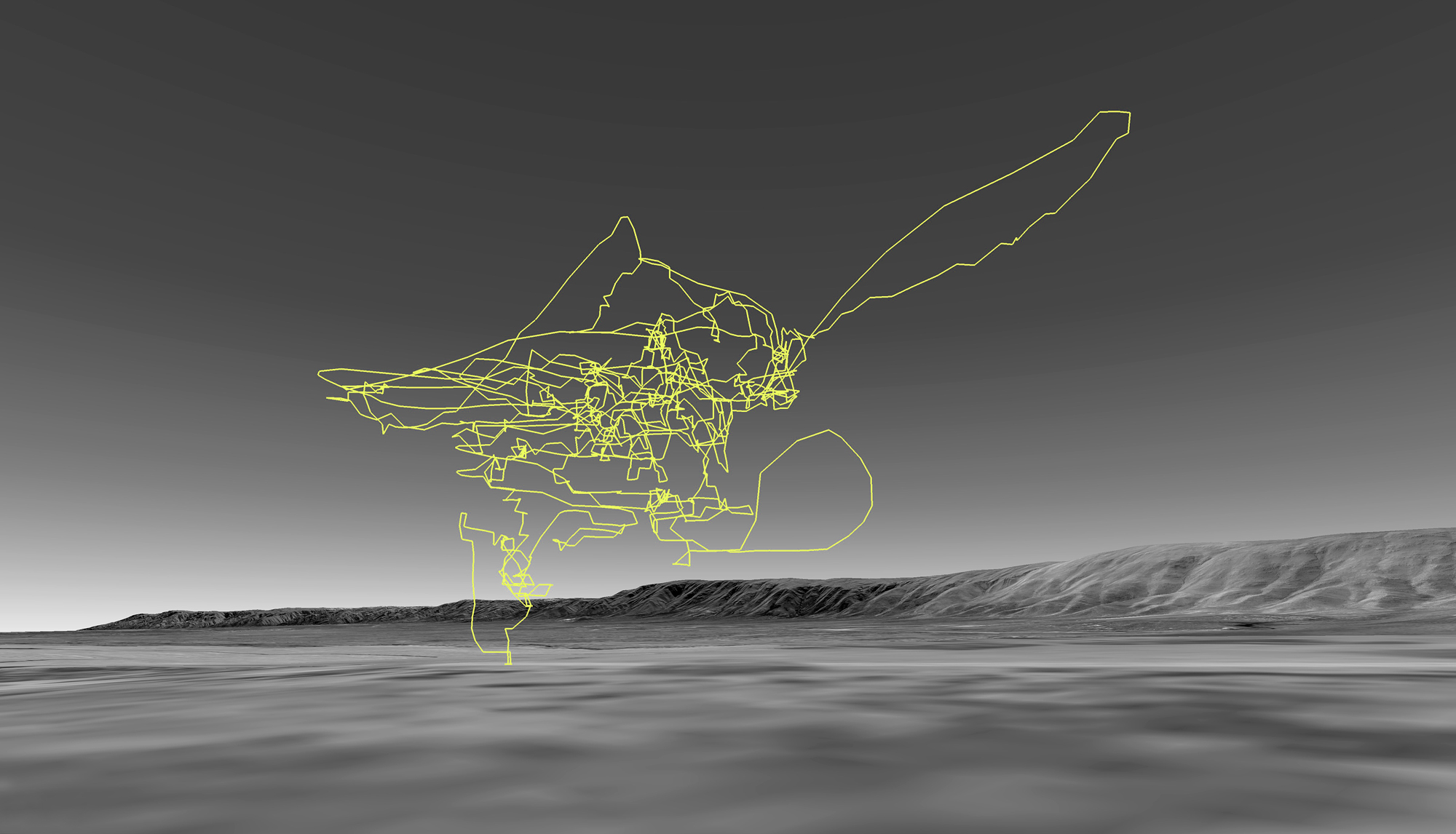
Aerocene Explorer flight path visualization with the backdrop of Sierras Comechingones, San Luis.
Would you like to visualize these flight on your own computer? You just need Google Earth and this files:
Explorer AE032.kml (121.1 KB)
Explorer AE034.kml (121.3 KB)
Globo 1.kml (357.8 KB)
Globo 2.kml (121.2 KB)
Aerocene Flavia.kml (74.6 KB)
Aussie Esperance & Perth Explorer Flights
Aerocene in San Francisco – moving with MAFIA Bags handmade sculpture
MAFIA Bags, a design and manufacturing studio based in San Francisco, followed the online instructions to build an Aerocene Explorer and added its personal touch to the sculpture, which floated over the Californian sun
Continue readingAfter the End of The World – Exhibition at CCCB
Aerocene is part of the new exhibition at CCCB in Barcelona, Spain aiming attention at the present and future of climate crisis.
Continue reading

